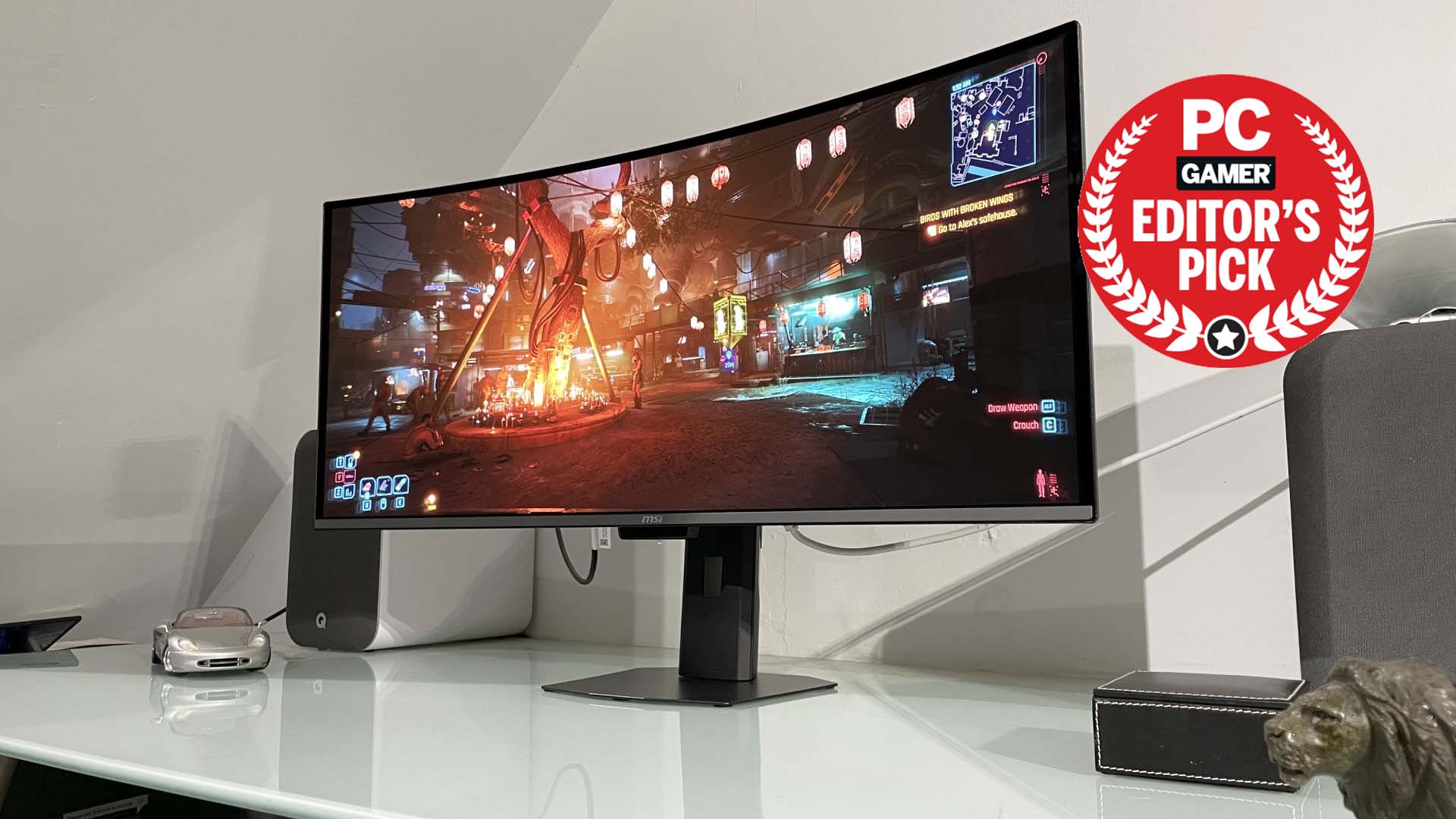Baldur's Gate II: Enhanced Edition 4K gallery
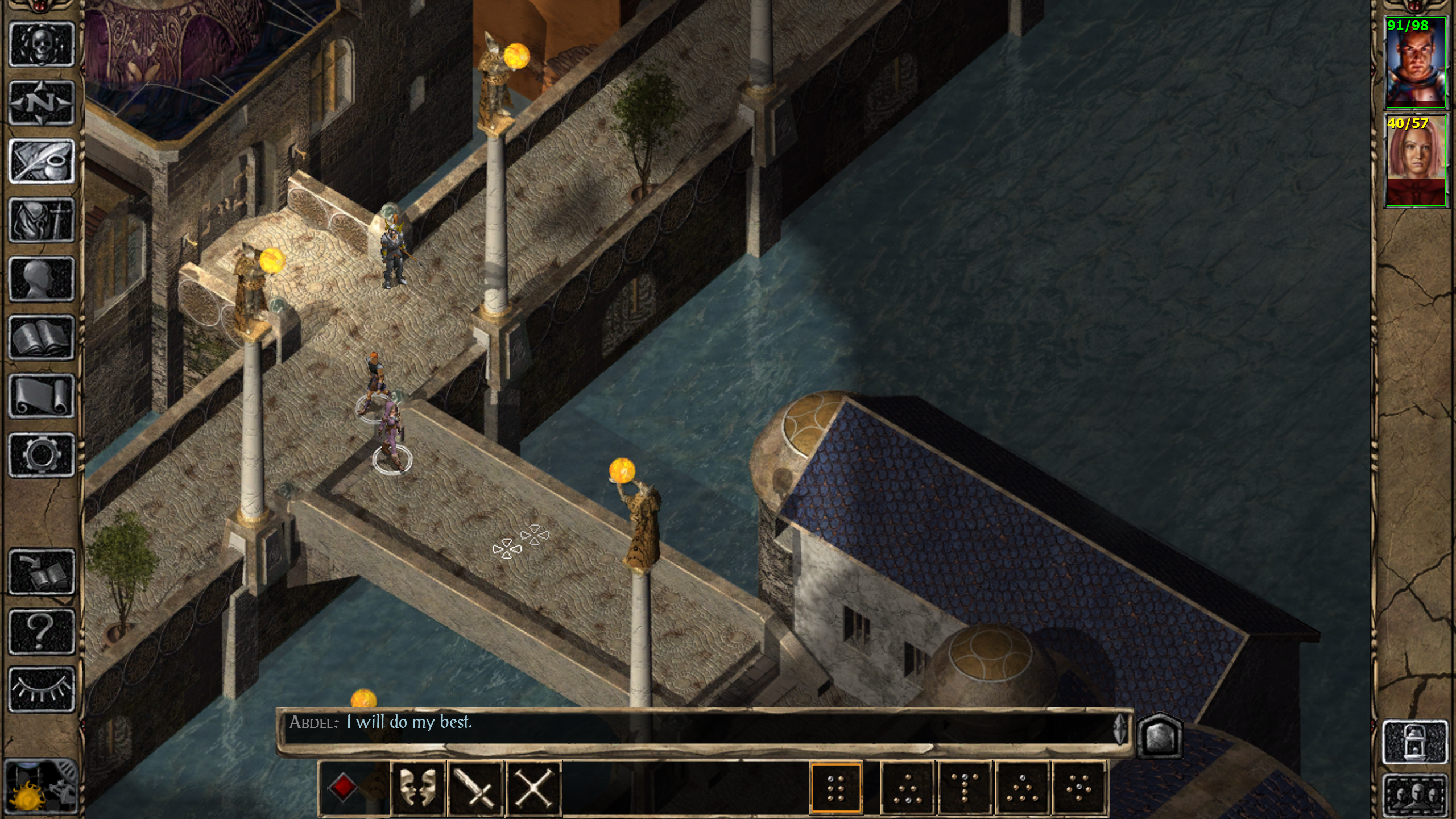
Pixel Boost is our weekly series devoted to the artistry of games, and the techniques required to run them at high resolutions.
Pillars of Eternity, Obsidian's throwback to the glory days of the cRPG, is finally here. And it's great. Pillars lives up to the legacy of some of the greatest PC RPGs ever made. Games likes Baldur's Gate II, for example.
For years, RPGs made on Bioware's now-ancient Infinity Engine have been notoriously fickle to run on modern PCs. Their 2D graphics don't play nice with higher resolutions, if you can even get them to run on Windows 7 or Windows 8 at all. Some of those old games, like Planescape: Torment, still haven't gotten the modern retouching they deserve, although on a previous Pixel Boost I wrote about how to modify Planescape: Torment to run at higher resolutions.
Baldur's Gate II doesn't need the same tinkering thanks to its Enhanced Edition. In honor of Pillars of Eternity, we booted it up and let it stretch out to fill a full 4K display. Zoom in to these screenshots, and you'll see the Enhanced Edition Port sadly doesn't look great so high-res; it was probably built to scale to the more reasonable 1080p. Played on a big 4K panel, however, the 4K resolution simply creates a familiar pre-rendered blurriness that makes the Infinity Engine feel right at home in 2015.
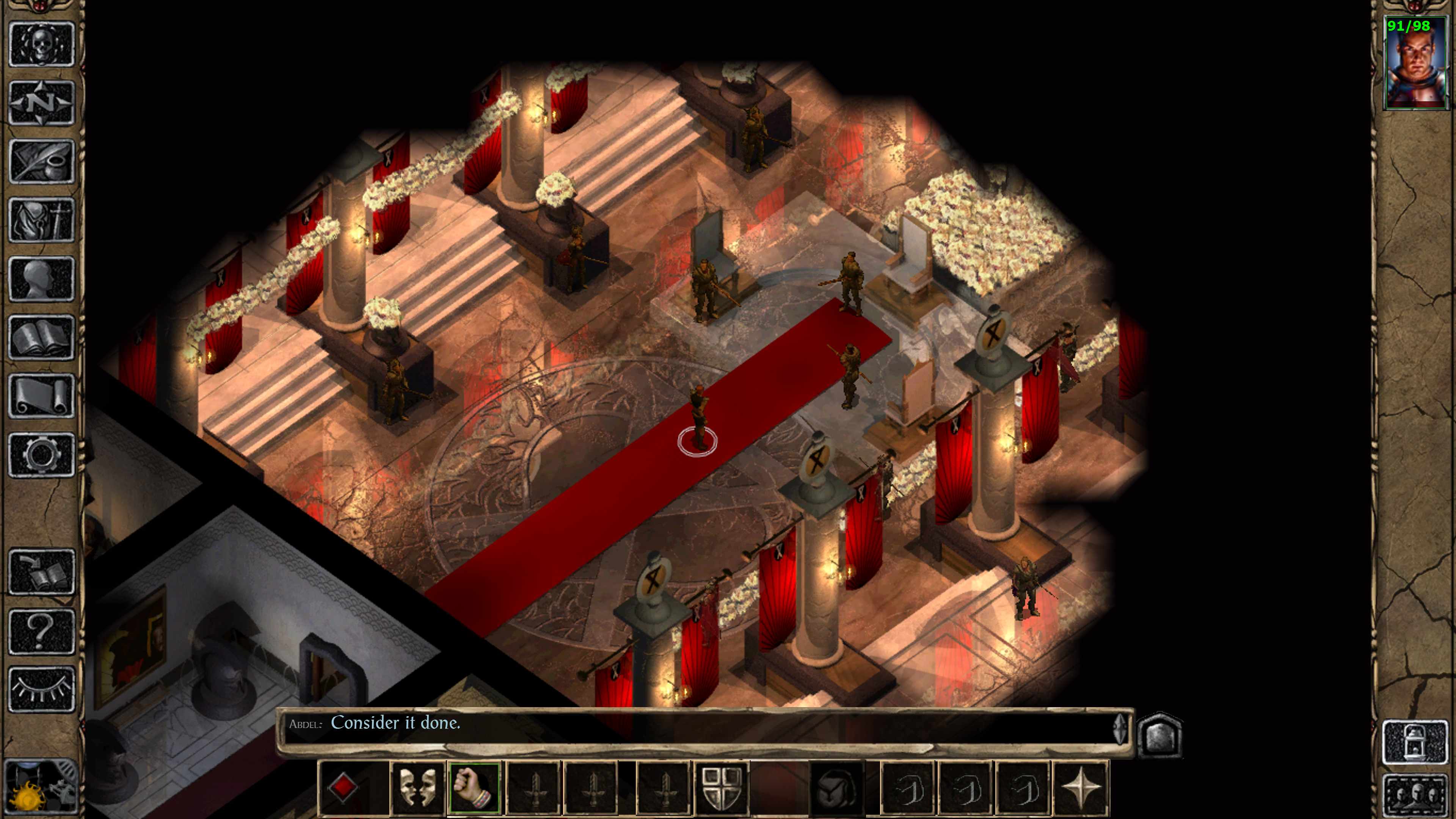
Pixel Boost is our weekly series devoted to the artistry of games, and the techniques required to run them at high resolutions.
Pillars of Eternity, Obsidian's throwback to the glory days of the cRPG, is finally here. And it's great. Pillars lives up to the legacy of some of the greatest PC RPGs ever made. Games likes Baldur's Gate II, for example.
For years, RPGs made on Bioware's now-ancient Infinity Engine have been notoriously fickle to run on modern PCs. Their 2D graphics don't play nice with higher resolutions, if you can even get them to run on Windows 7 or Windows 8 at all. Some of those old games, like Planescape: Torment, still haven't gotten the modern retouching they deserve, although on a previous Pixel Boost I wrote about how to modify Planescape: Torment to run at higher resolutions.
Baldur's Gate II doesn't need the same tinkering thanks to its Enhanced Edition. In honor of Pillars of Eternity, we booted it up and let it stretch out to fill a full 4K display. Zoom in to these screenshots, and you'll see the Enhanced Edition Port sadly doesn't look great so high-res; it was probably built to scale to the more reasonable 1080p. Played on a big 4K panel, however, the 4K resolution simply creates a familiar pre-rendered blurriness that makes the Infinity Engine feel right at home in 2015.
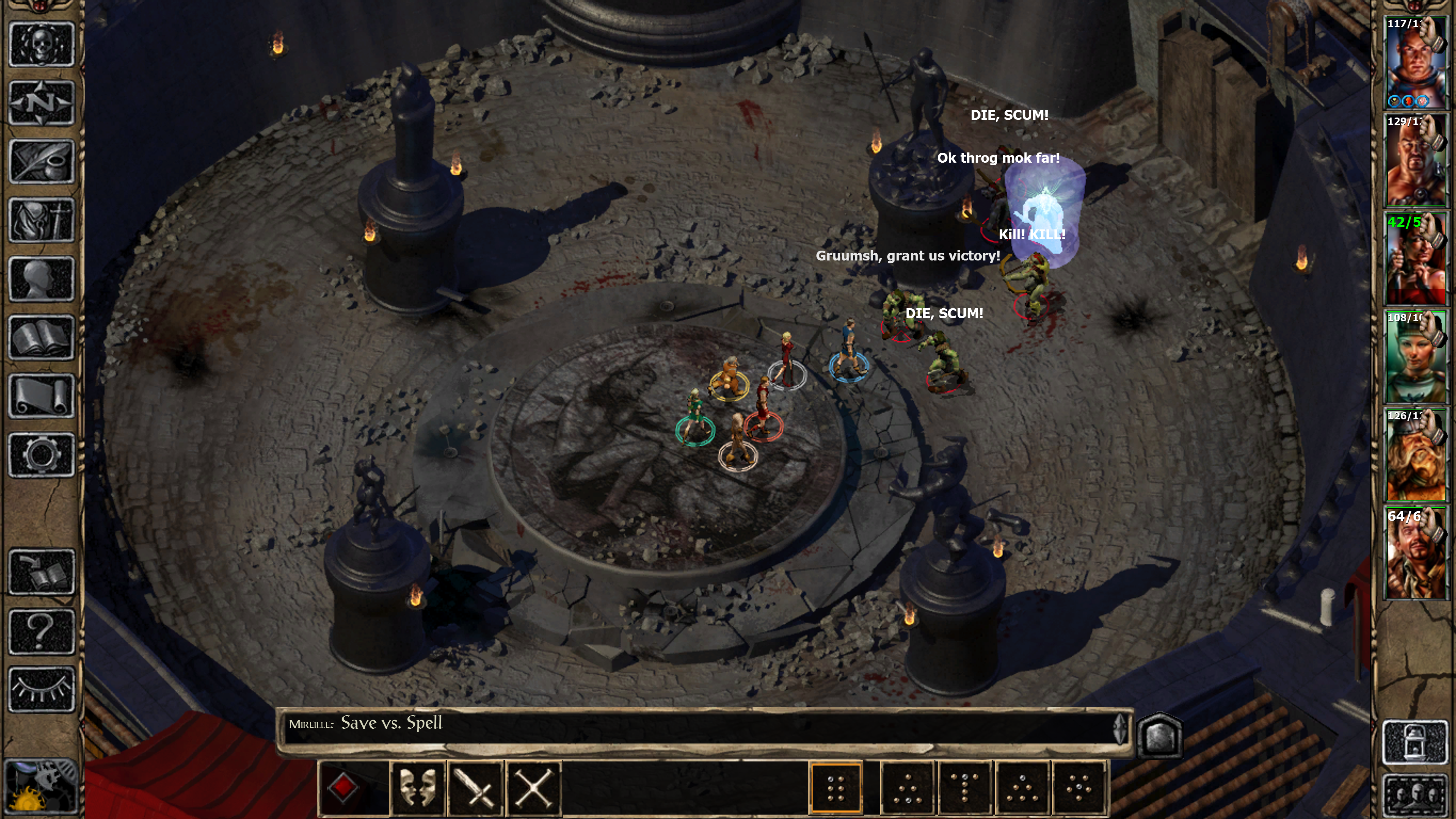
Pixel Boost is our weekly series devoted to the artistry of games, and the techniques required to run them at high resolutions.
Pillars of Eternity, Obsidian's throwback to the glory days of the cRPG, is finally here. And it's great. Pillars lives up to the legacy of some of the greatest PC RPGs ever made. Games likes Baldur's Gate II, for example.
For years, RPGs made on Bioware's now-ancient Infinity Engine have been notoriously fickle to run on modern PCs. Their 2D graphics don't play nice with higher resolutions, if you can even get them to run on Windows 7 or Windows 8 at all. Some of those old games, like Planescape: Torment, still haven't gotten the modern retouching they deserve, although on a previous Pixel Boost I wrote about how to modify Planescape: Torment to run at higher resolutions.
Baldur's Gate II doesn't need the same tinkering thanks to its Enhanced Edition. In honor of Pillars of Eternity, we booted it up and let it stretch out to fill a full 4K display. Zoom in to these screenshots, and you'll see the Enhanced Edition Port sadly doesn't look great so high-res; it was probably built to scale to the more reasonable 1080p. Played on a big 4K panel, however, the 4K resolution simply creates a familiar pre-rendered blurriness that makes the Infinity Engine feel right at home in 2015.
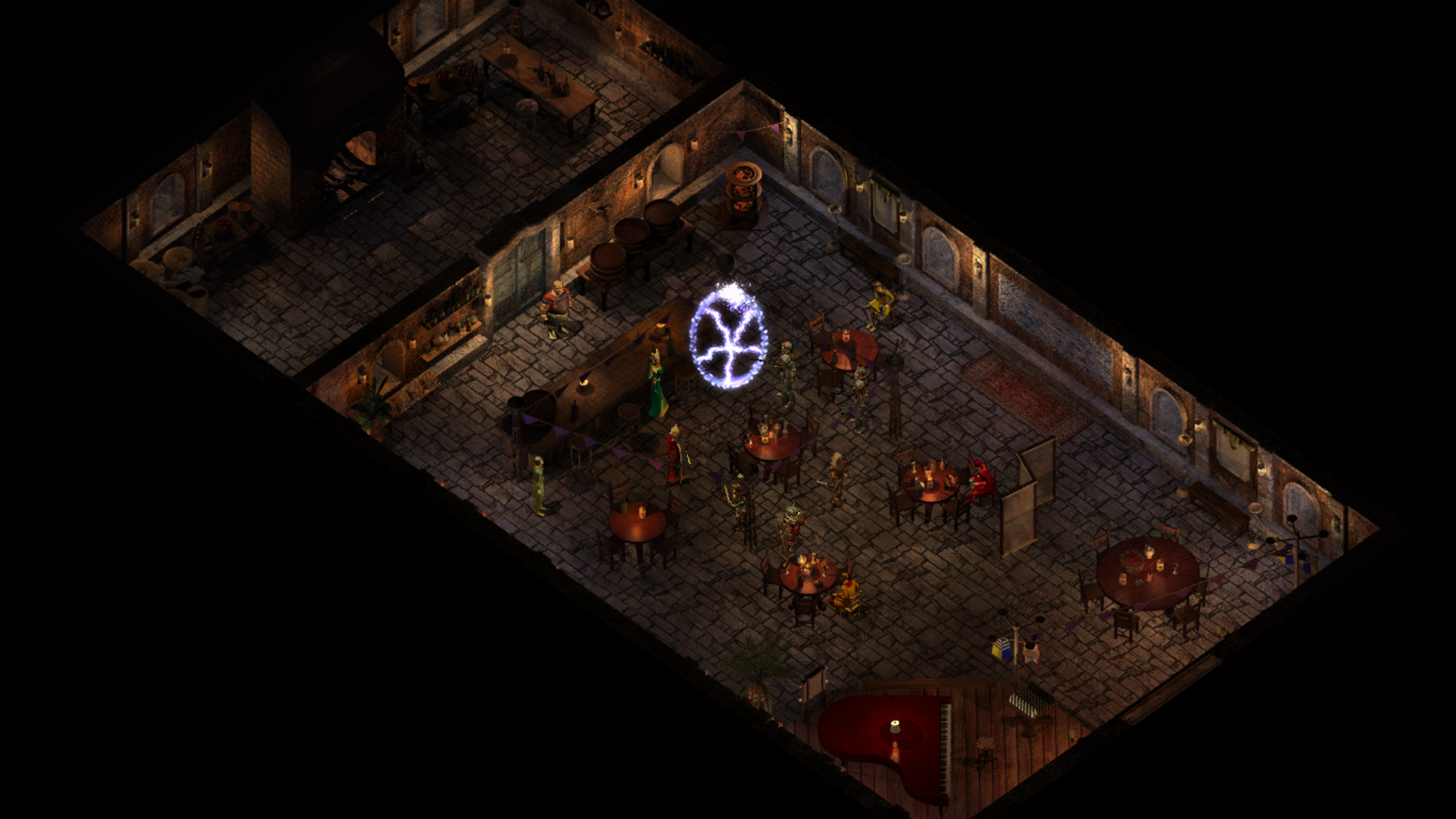
Pixel Boost is our weekly series devoted to the artistry of games, and the techniques required to run them at high resolutions.
Pillars of Eternity, Obsidian's throwback to the glory days of the cRPG, is finally here. And it's great. Pillars lives up to the legacy of some of the greatest PC RPGs ever made. Games likes Baldur's Gate II, for example.
For years, RPGs made on Bioware's now-ancient Infinity Engine have been notoriously fickle to run on modern PCs. Their 2D graphics don't play nice with higher resolutions, if you can even get them to run on Windows 7 or Windows 8 at all. Some of those old games, like Planescape: Torment, still haven't gotten the modern retouching they deserve, although on a previous Pixel Boost I wrote about how to modify Planescape: Torment to run at higher resolutions.
Baldur's Gate II doesn't need the same tinkering thanks to its Enhanced Edition. In honor of Pillars of Eternity, we booted it up and let it stretch out to fill a full 4K display. Zoom in to these screenshots, and you'll see the Enhanced Edition Port sadly doesn't look great so high-res; it was probably built to scale to the more reasonable 1080p. Played on a big 4K panel, however, the 4K resolution simply creates a familiar pre-rendered blurriness that makes the Infinity Engine feel right at home in 2015.
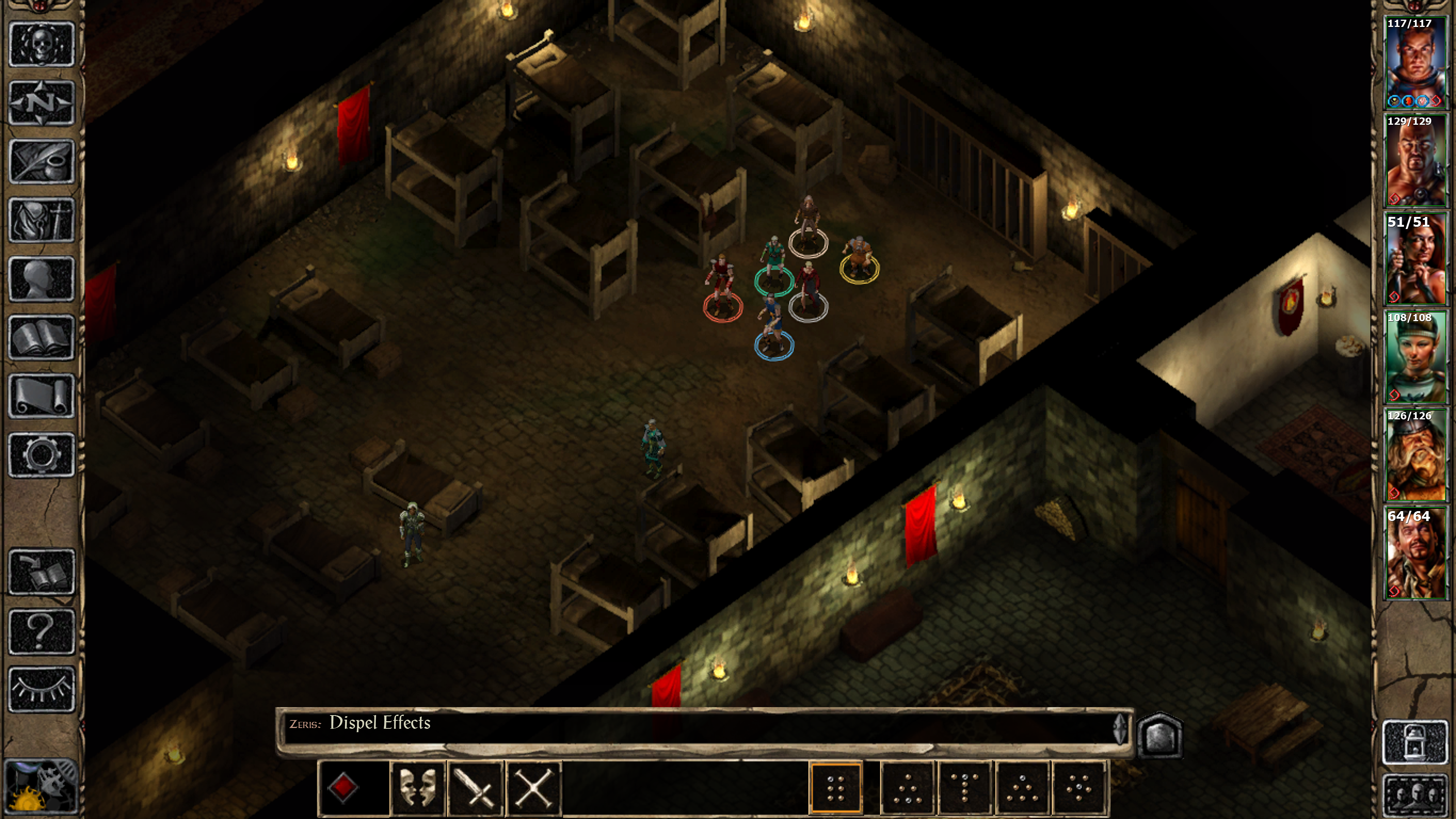
Pixel Boost is our weekly series devoted to the artistry of games, and the techniques required to run them at high resolutions.
Pillars of Eternity, Obsidian's throwback to the glory days of the cRPG, is finally here. And it's great. Pillars lives up to the legacy of some of the greatest PC RPGs ever made. Games likes Baldur's Gate II, for example.
For years, RPGs made on Bioware's now-ancient Infinity Engine have been notoriously fickle to run on modern PCs. Their 2D graphics don't play nice with higher resolutions, if you can even get them to run on Windows 7 or Windows 8 at all. Some of those old games, like Planescape: Torment, still haven't gotten the modern retouching they deserve, although on a previous Pixel Boost I wrote about how to modify Planescape: Torment to run at higher resolutions.
Baldur's Gate II doesn't need the same tinkering thanks to its Enhanced Edition. In honor of Pillars of Eternity, we booted it up and let it stretch out to fill a full 4K display. Zoom in to these screenshots, and you'll see the Enhanced Edition Port sadly doesn't look great so high-res; it was probably built to scale to the more reasonable 1080p. Played on a big 4K panel, however, the 4K resolution simply creates a familiar pre-rendered blurriness that makes the Infinity Engine feel right at home in 2015.
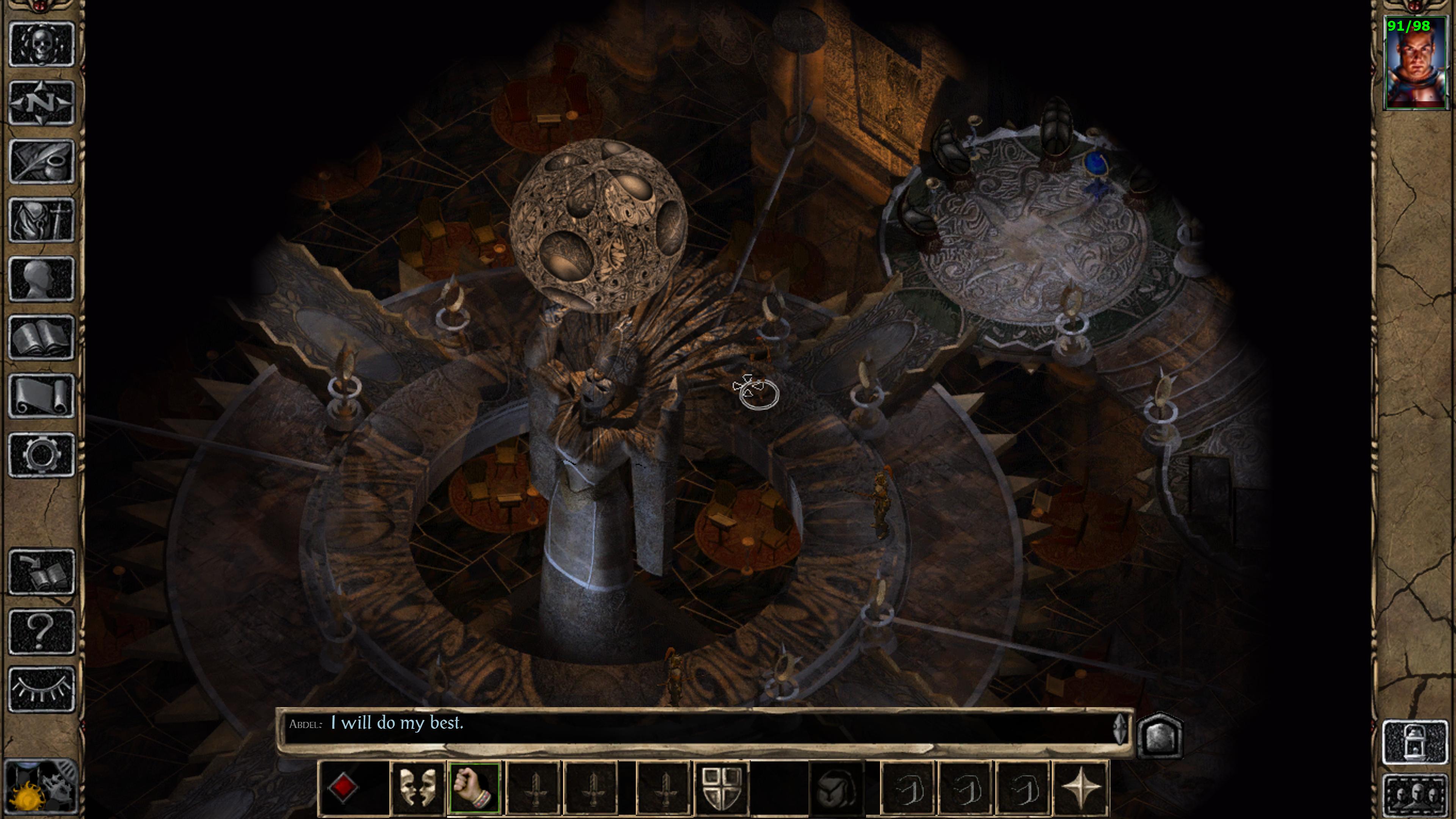
Pixel Boost is our weekly series devoted to the artistry of games, and the techniques required to run them at high resolutions.
Pillars of Eternity, Obsidian's throwback to the glory days of the cRPG, is finally here. And it's great. Pillars lives up to the legacy of some of the greatest PC RPGs ever made. Games likes Baldur's Gate II, for example.
For years, RPGs made on Bioware's now-ancient Infinity Engine have been notoriously fickle to run on modern PCs. Their 2D graphics don't play nice with higher resolutions, if you can even get them to run on Windows 7 or Windows 8 at all. Some of those old games, like Planescape: Torment, still haven't gotten the modern retouching they deserve, although on a previous Pixel Boost I wrote about how to modify Planescape: Torment to run at higher resolutions.
Baldur's Gate II doesn't need the same tinkering thanks to its Enhanced Edition. In honor of Pillars of Eternity, we booted it up and let it stretch out to fill a full 4K display. Zoom in to these screenshots, and you'll see the Enhanced Edition Port sadly doesn't look great so high-res; it was probably built to scale to the more reasonable 1080p. Played on a big 4K panel, however, the 4K resolution simply creates a familiar pre-rendered blurriness that makes the Infinity Engine feel right at home in 2015.
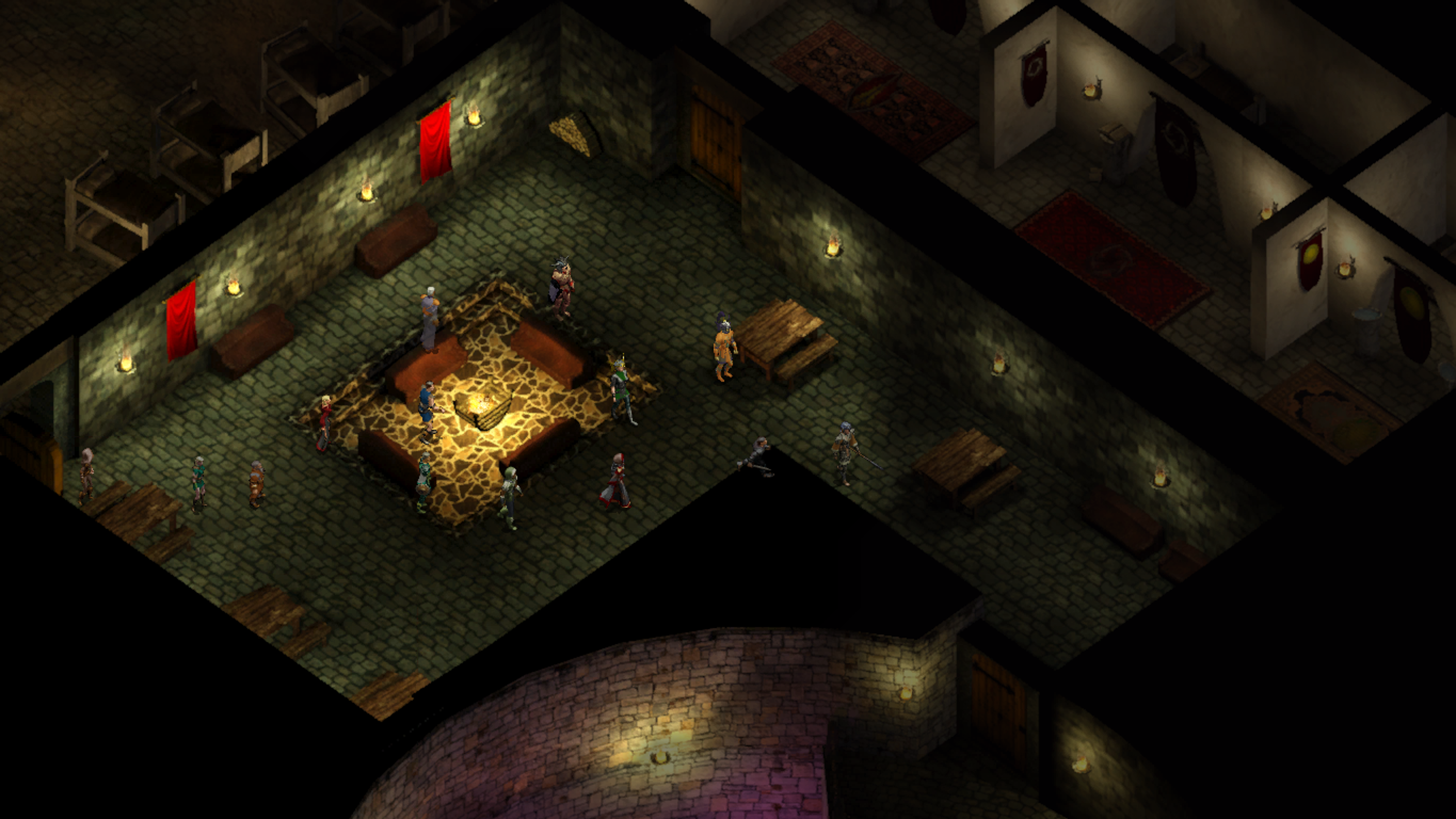
Pixel Boost is our weekly series devoted to the artistry of games, and the techniques required to run them at high resolutions.
Pillars of Eternity, Obsidian's throwback to the glory days of the cRPG, is finally here. And it's great. Pillars lives up to the legacy of some of the greatest PC RPGs ever made. Games likes Baldur's Gate II, for example.
For years, RPGs made on Bioware's now-ancient Infinity Engine have been notoriously fickle to run on modern PCs. Their 2D graphics don't play nice with higher resolutions, if you can even get them to run on Windows 7 or Windows 8 at all. Some of those old games, like Planescape: Torment, still haven't gotten the modern retouching they deserve, although on a previous Pixel Boost I wrote about how to modify Planescape: Torment to run at higher resolutions.
Baldur's Gate II doesn't need the same tinkering thanks to its Enhanced Edition. In honor of Pillars of Eternity, we booted it up and let it stretch out to fill a full 4K display. Zoom in to these screenshots, and you'll see the Enhanced Edition Port sadly doesn't look great so high-res; it was probably built to scale to the more reasonable 1080p. Played on a big 4K panel, however, the 4K resolution simply creates a familiar pre-rendered blurriness that makes the Infinity Engine feel right at home in 2015.
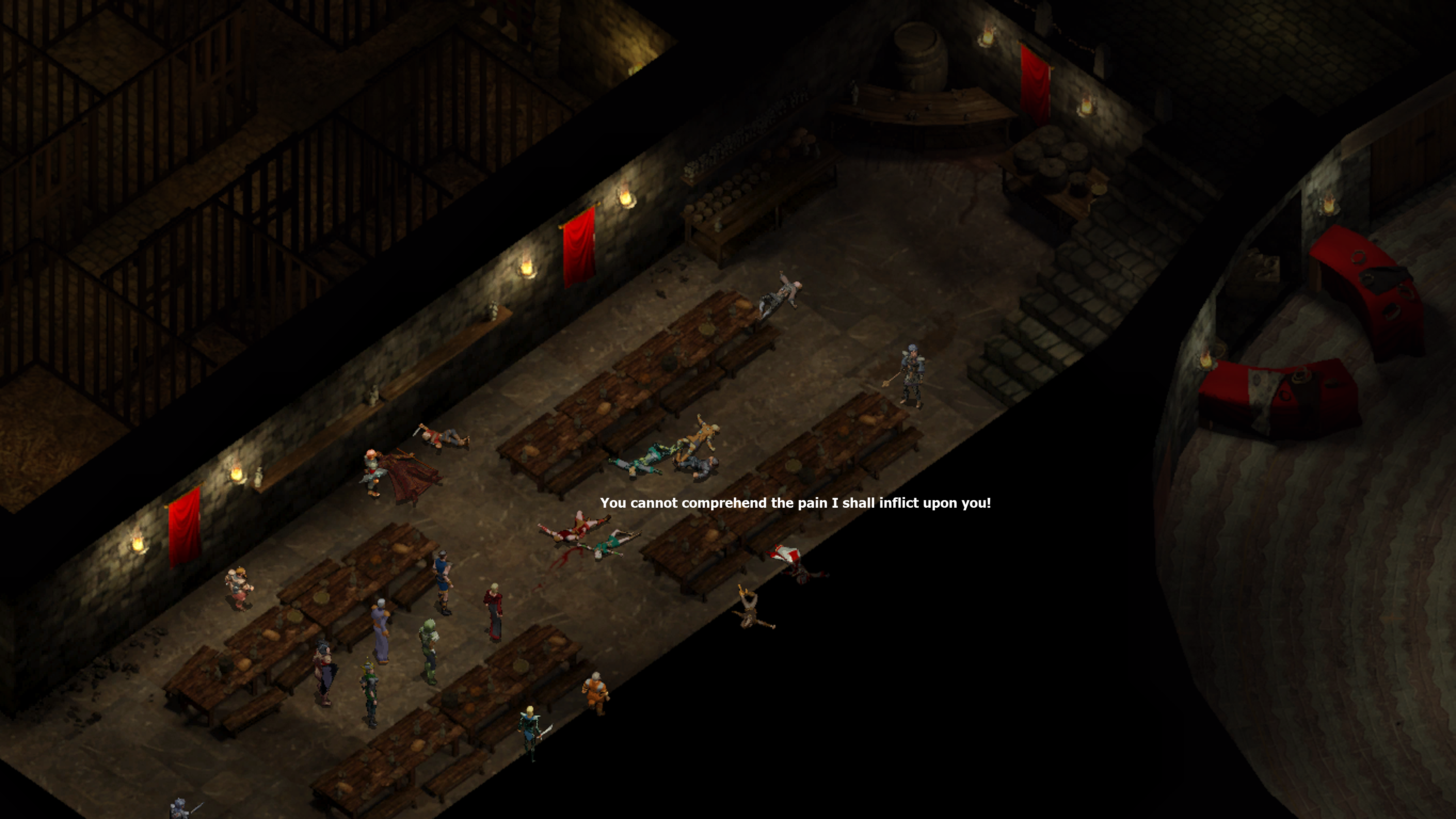
Pixel Boost is our weekly series devoted to the artistry of games, and the techniques required to run them at high resolutions.
Pillars of Eternity, Obsidian's throwback to the glory days of the cRPG, is finally here. And it's great. Pillars lives up to the legacy of some of the greatest PC RPGs ever made. Games likes Baldur's Gate II, for example.
For years, RPGs made on Bioware's now-ancient Infinity Engine have been notoriously fickle to run on modern PCs. Their 2D graphics don't play nice with higher resolutions, if you can even get them to run on Windows 7 or Windows 8 at all. Some of those old games, like Planescape: Torment, still haven't gotten the modern retouching they deserve, although on a previous Pixel Boost I wrote about how to modify Planescape: Torment to run at higher resolutions.
Baldur's Gate II doesn't need the same tinkering thanks to its Enhanced Edition. In honor of Pillars of Eternity, we booted it up and let it stretch out to fill a full 4K display. Zoom in to these screenshots, and you'll see the Enhanced Edition Port sadly doesn't look great so high-res; it was probably built to scale to the more reasonable 1080p. Played on a big 4K panel, however, the 4K resolution simply creates a familiar pre-rendered blurriness that makes the Infinity Engine feel right at home in 2015.
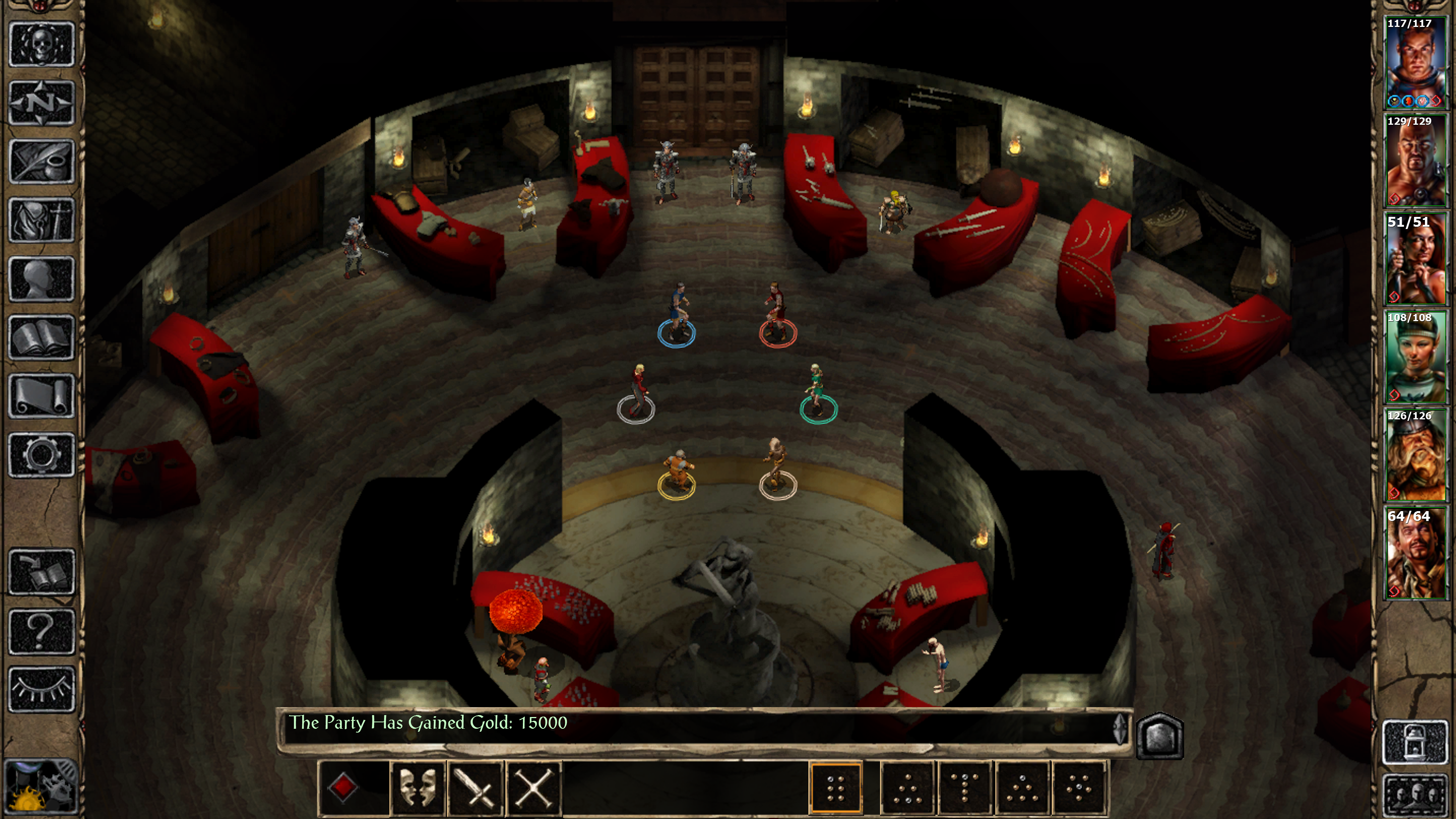
Pixel Boost is our weekly series devoted to the artistry of games, and the techniques required to run them at high resolutions.
Pillars of Eternity, Obsidian's throwback to the glory days of the cRPG, is finally here. And it's great. Pillars lives up to the legacy of some of the greatest PC RPGs ever made. Games likes Baldur's Gate II, for example.
For years, RPGs made on Bioware's now-ancient Infinity Engine have been notoriously fickle to run on modern PCs. Their 2D graphics don't play nice with higher resolutions, if you can even get them to run on Windows 7 or Windows 8 at all. Some of those old games, like Planescape: Torment, still haven't gotten the modern retouching they deserve, although on a previous Pixel Boost I wrote about how to modify Planescape: Torment to run at higher resolutions.
Baldur's Gate II doesn't need the same tinkering thanks to its Enhanced Edition. In honor of Pillars of Eternity, we booted it up and let it stretch out to fill a full 4K display. Zoom in to these screenshots, and you'll see the Enhanced Edition Port sadly doesn't look great so high-res; it was probably built to scale to the more reasonable 1080p. Played on a big 4K panel, however, the 4K resolution simply creates a familiar pre-rendered blurriness that makes the Infinity Engine feel right at home in 2015.
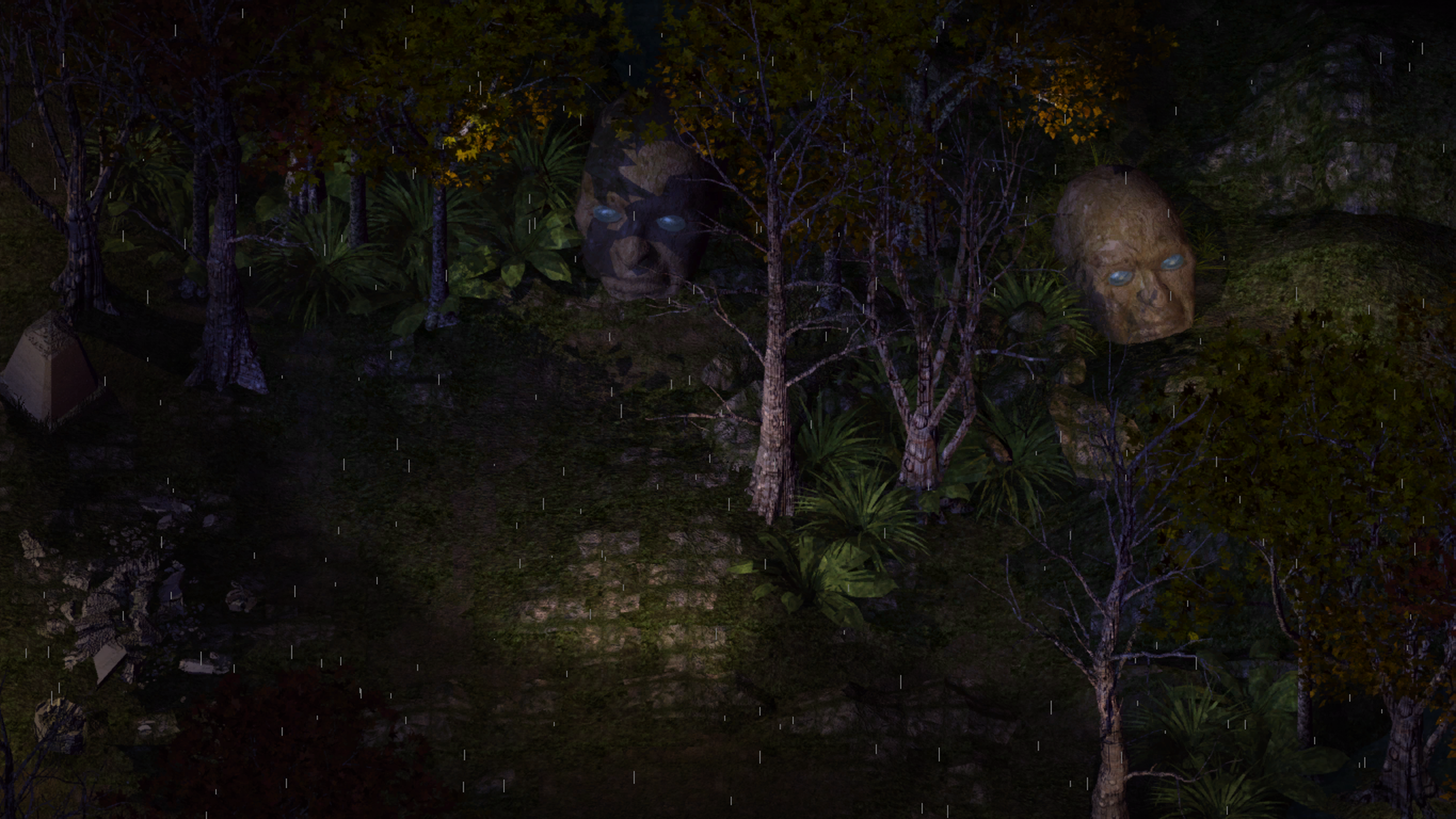
Pixel Boost is our weekly series devoted to the artistry of games, and the techniques required to run them at high resolutions.
Pillars of Eternity, Obsidian's throwback to the glory days of the cRPG, is finally here. And it's great. Pillars lives up to the legacy of some of the greatest PC RPGs ever made. Games likes Baldur's Gate II, for example.
For years, RPGs made on Bioware's now-ancient Infinity Engine have been notoriously fickle to run on modern PCs. Their 2D graphics don't play nice with higher resolutions, if you can even get them to run on Windows 7 or Windows 8 at all. Some of those old games, like Planescape: Torment, still haven't gotten the modern retouching they deserve, although on a previous Pixel Boost I wrote about how to modify Planescape: Torment to run at higher resolutions.
Baldur's Gate II doesn't need the same tinkering thanks to its Enhanced Edition. In honor of Pillars of Eternity, we booted it up and let it stretch out to fill a full 4K display. Zoom in to these screenshots, and you'll see the Enhanced Edition Port sadly doesn't look great so high-res; it was probably built to scale to the more reasonable 1080p. Played on a big 4K panel, however, the 4K resolution simply creates a familiar pre-rendered blurriness that makes the Infinity Engine feel right at home in 2015.
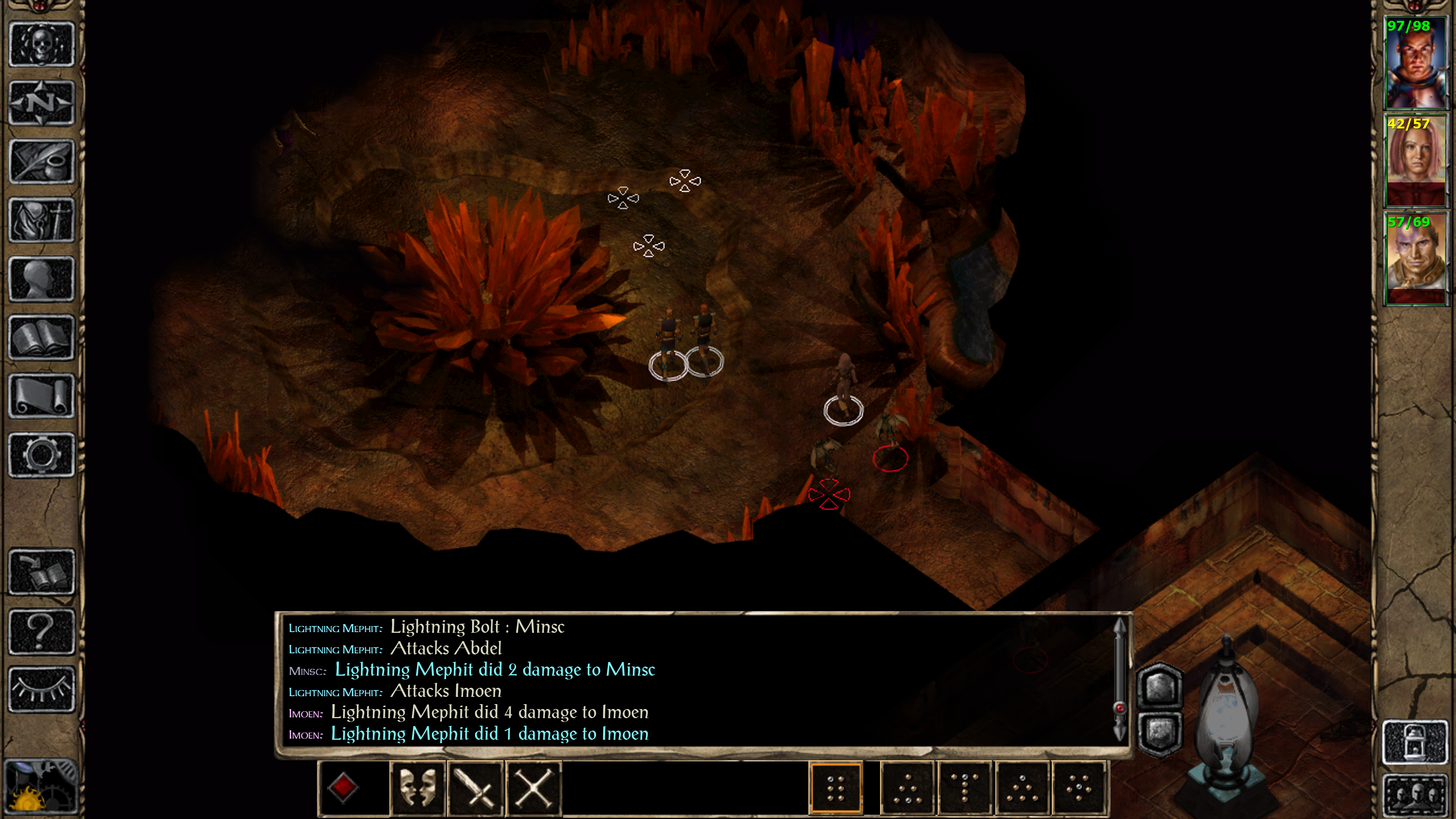
Pixel Boost is our weekly series devoted to the artistry of games, and the techniques required to run them at high resolutions.
Pillars of Eternity, Obsidian's throwback to the glory days of the cRPG, is finally here. And it's great. Pillars lives up to the legacy of some of the greatest PC RPGs ever made. Games likes Baldur's Gate II, for example.
For years, RPGs made on Bioware's now-ancient Infinity Engine have been notoriously fickle to run on modern PCs. Their 2D graphics don't play nice with higher resolutions, if you can even get them to run on Windows 7 or Windows 8 at all. Some of those old games, like Planescape: Torment, still haven't gotten the modern retouching they deserve, although on a previous Pixel Boost I wrote about how to modify Planescape: Torment to run at higher resolutions.
Baldur's Gate II doesn't need the same tinkering thanks to its Enhanced Edition. In honor of Pillars of Eternity, we booted it up and let it stretch out to fill a full 4K display. Zoom in to these screenshots, and you'll see the Enhanced Edition Port sadly doesn't look great so high-res; it was probably built to scale to the more reasonable 1080p. Played on a big 4K panel, however, the 4K resolution simply creates a familiar pre-rendered blurriness that makes the Infinity Engine feel right at home in 2015.
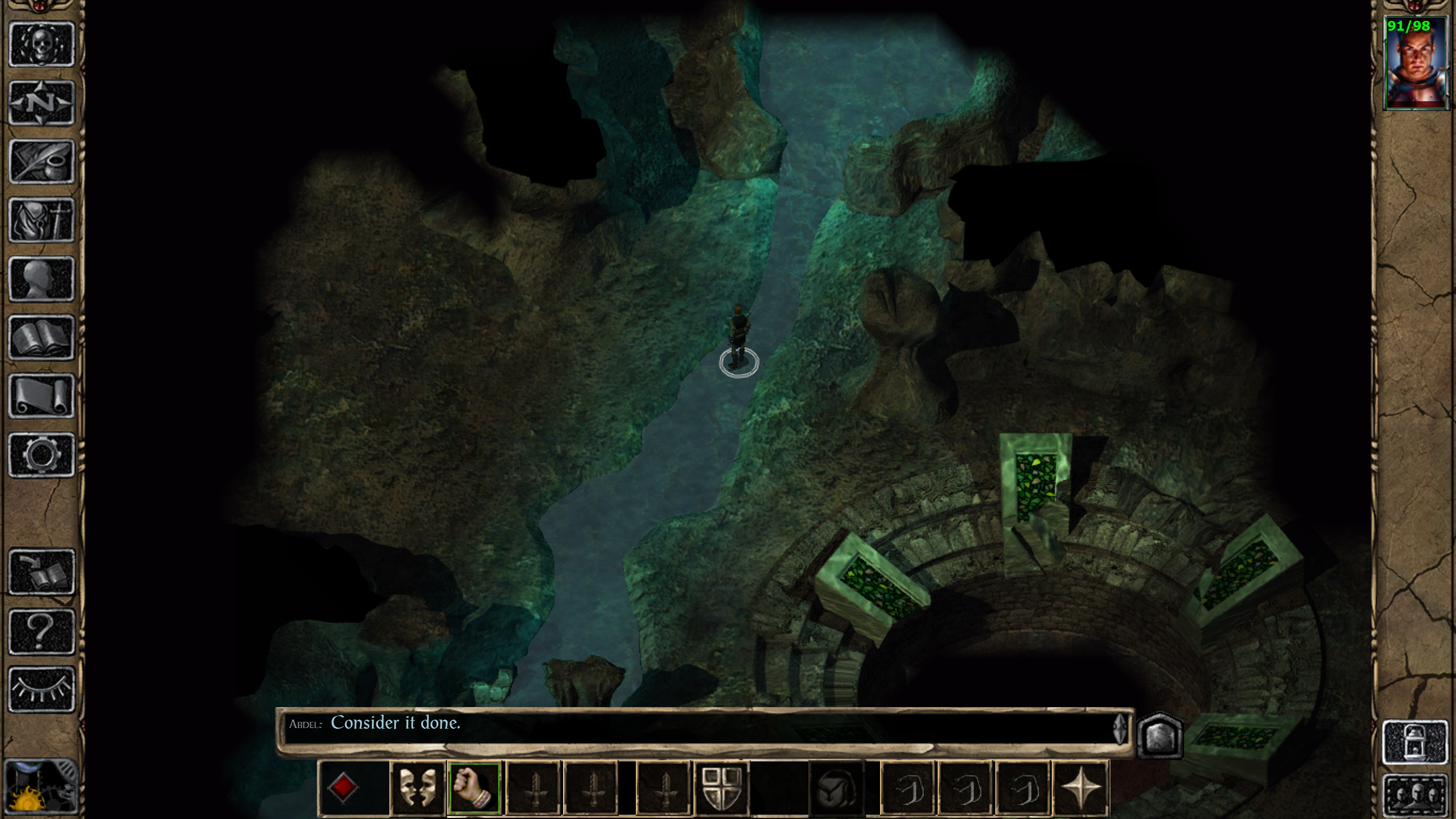
Pixel Boost is our weekly series devoted to the artistry of games, and the techniques required to run them at high resolutions.
Pillars of Eternity, Obsidian's throwback to the glory days of the cRPG, is finally here. And it's great. Pillars lives up to the legacy of some of the greatest PC RPGs ever made. Games likes Baldur's Gate II, for example.
For years, RPGs made on Bioware's now-ancient Infinity Engine have been notoriously fickle to run on modern PCs. Their 2D graphics don't play nice with higher resolutions, if you can even get them to run on Windows 7 or Windows 8 at all. Some of those old games, like Planescape: Torment, still haven't gotten the modern retouching they deserve, although on a previous Pixel Boost I wrote about how to modify Planescape: Torment to run at higher resolutions.
Baldur's Gate II doesn't need the same tinkering thanks to its Enhanced Edition. In honor of Pillars of Eternity, we booted it up and let it stretch out to fill a full 4K display. Zoom in to these screenshots, and you'll see the Enhanced Edition Port sadly doesn't look great so high-res; it was probably built to scale to the more reasonable 1080p. Played on a big 4K panel, however, the 4K resolution simply creates a familiar pre-rendered blurriness that makes the Infinity Engine feel right at home in 2015.
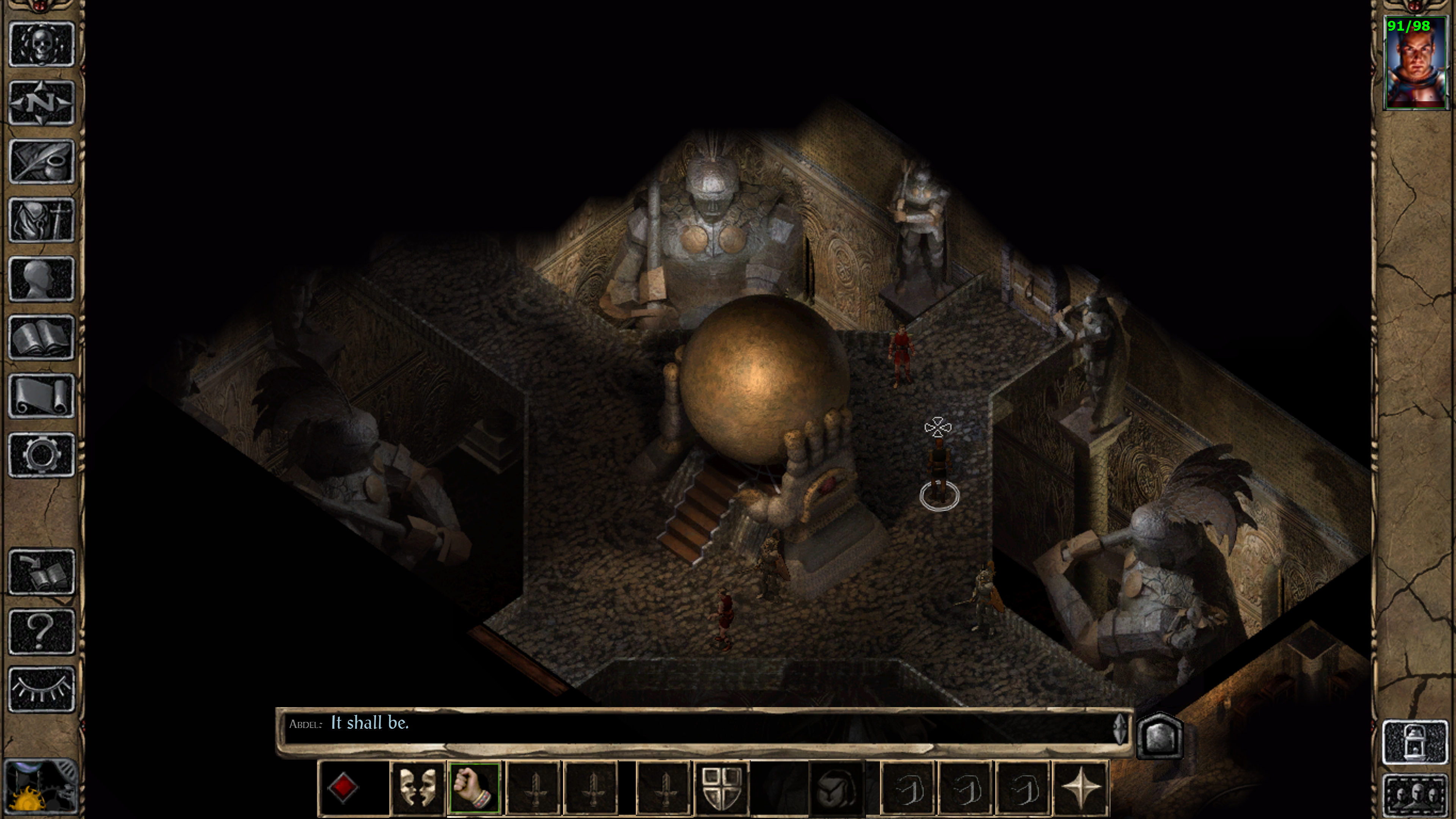
Pixel Boost is our weekly series devoted to the artistry of games, and the techniques required to run them at high resolutions.
Pillars of Eternity, Obsidian's throwback to the glory days of the cRPG, is finally here. And it's great. Pillars lives up to the legacy of some of the greatest PC RPGs ever made. Games likes Baldur's Gate II, for example.
For years, RPGs made on Bioware's now-ancient Infinity Engine have been notoriously fickle to run on modern PCs. Their 2D graphics don't play nice with higher resolutions, if you can even get them to run on Windows 7 or Windows 8 at all. Some of those old games, like Planescape: Torment, still haven't gotten the modern retouching they deserve, although on a previous Pixel Boost I wrote about how to modify Planescape: Torment to run at higher resolutions.
Baldur's Gate II doesn't need the same tinkering thanks to its Enhanced Edition. In honor of Pillars of Eternity, we booted it up and let it stretch out to fill a full 4K display. Zoom in to these screenshots, and you'll see the Enhanced Edition Port sadly doesn't look great so high-res; it was probably built to scale to the more reasonable 1080p. Played on a big 4K panel, however, the 4K resolution simply creates a familiar pre-rendered blurriness that makes the Infinity Engine feel right at home in 2015.
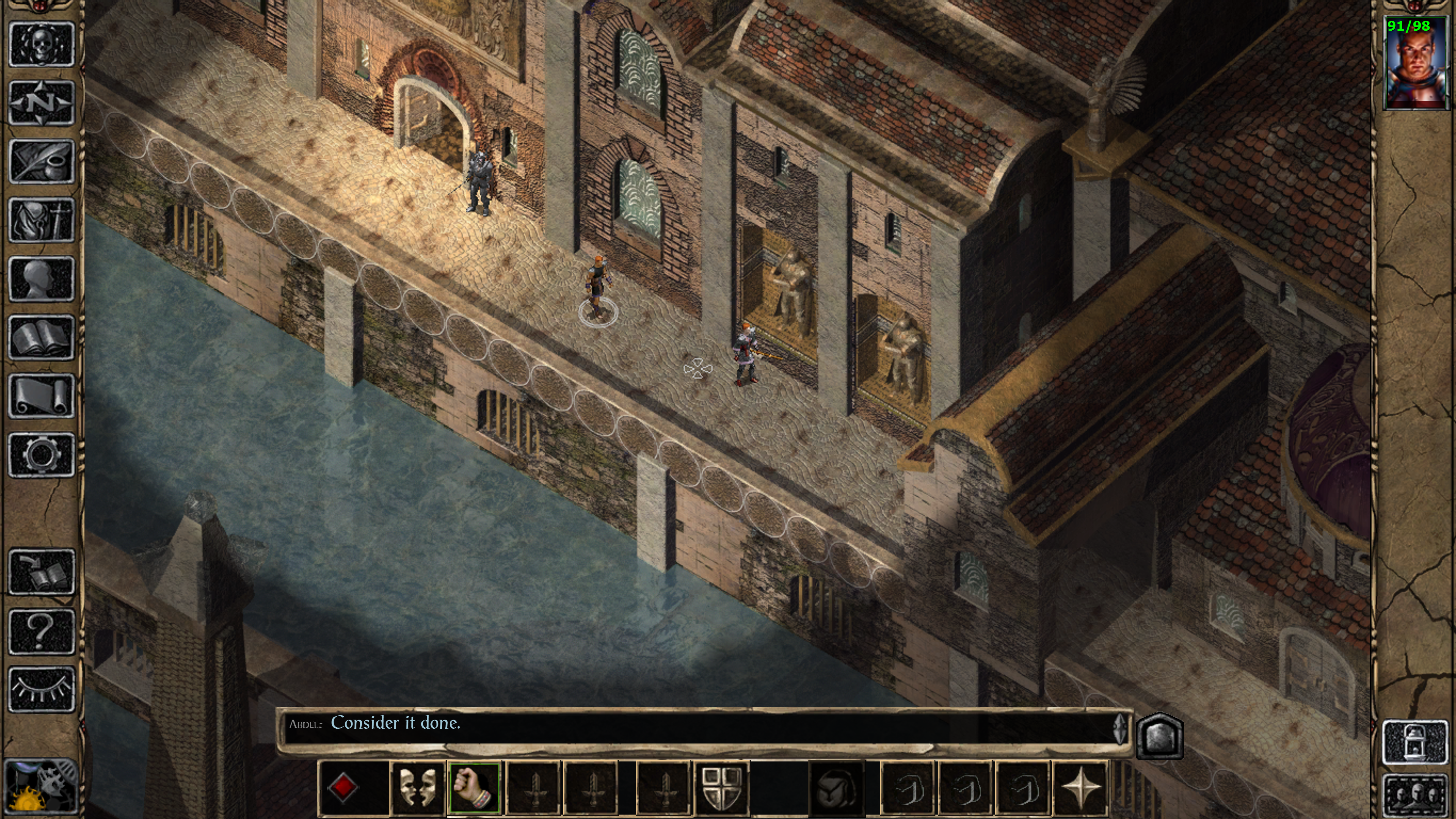
Pixel Boost is our weekly series devoted to the artistry of games, and the techniques required to run them at high resolutions.
Pillars of Eternity, Obsidian's throwback to the glory days of the cRPG, is finally here. And it's great. Pillars lives up to the legacy of some of the greatest PC RPGs ever made. Games likes Baldur's Gate II, for example.
For years, RPGs made on Bioware's now-ancient Infinity Engine have been notoriously fickle to run on modern PCs. Their 2D graphics don't play nice with higher resolutions, if you can even get them to run on Windows 7 or Windows 8 at all. Some of those old games, like Planescape: Torment, still haven't gotten the modern retouching they deserve, although on a previous Pixel Boost I wrote about how to modify Planescape: Torment to run at higher resolutions.
Baldur's Gate II doesn't need the same tinkering thanks to its Enhanced Edition. In honor of Pillars of Eternity, we booted it up and let it stretch out to fill a full 4K display. Zoom in to these screenshots, and you'll see the Enhanced Edition Port sadly doesn't look great so high-res; it was probably built to scale to the more reasonable 1080p. Played on a big 4K panel, however, the 4K resolution simply creates a familiar pre-rendered blurriness that makes the Infinity Engine feel right at home in 2015.
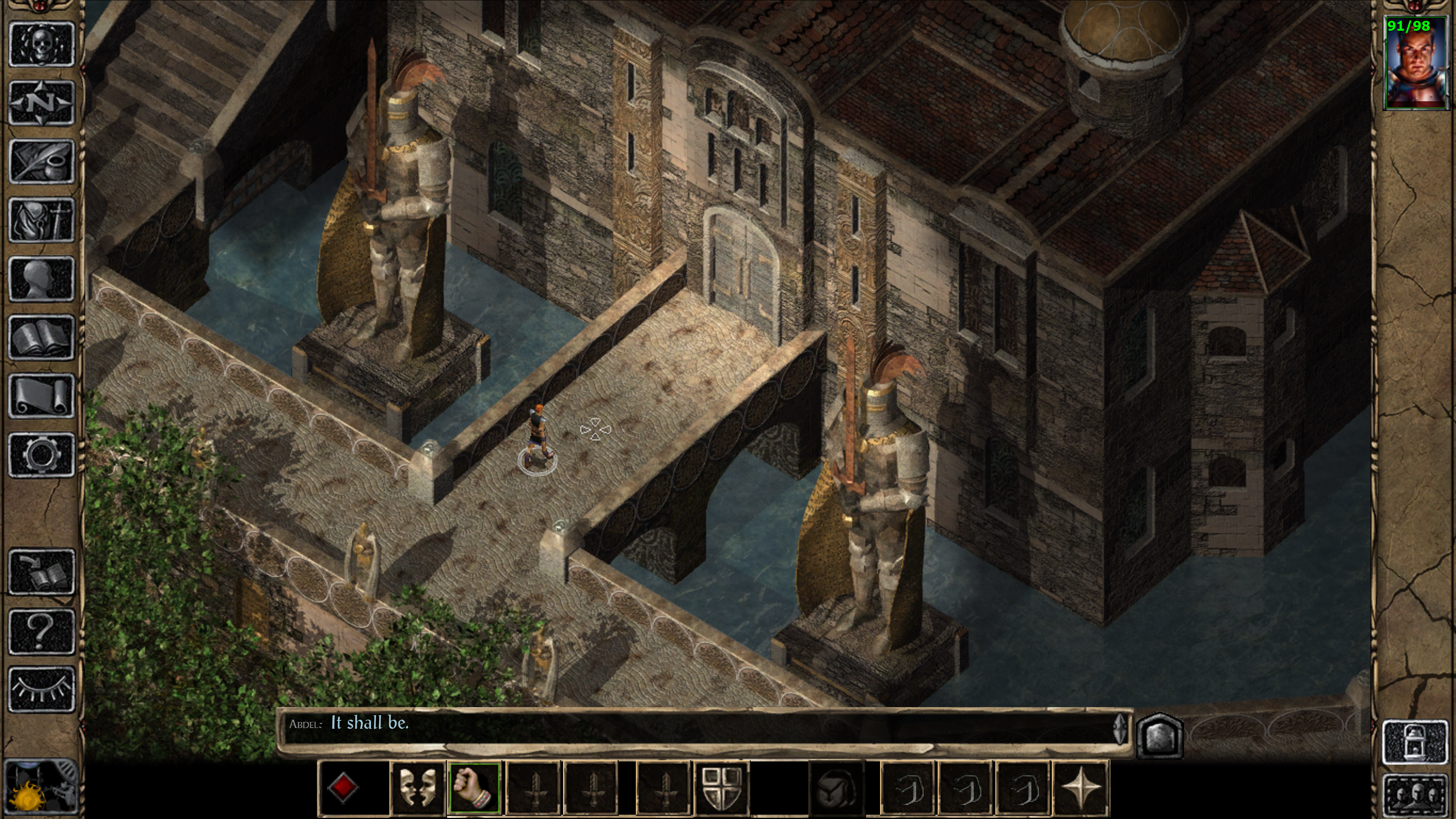
Pixel Boost is our weekly series devoted to the artistry of games, and the techniques required to run them at high resolutions.
Pillars of Eternity, Obsidian's throwback to the glory days of the cRPG, is finally here. And it's great. Pillars lives up to the legacy of some of the greatest PC RPGs ever made. Games likes Baldur's Gate II, for example.
For years, RPGs made on Bioware's now-ancient Infinity Engine have been notoriously fickle to run on modern PCs. Their 2D graphics don't play nice with higher resolutions, if you can even get them to run on Windows 7 or Windows 8 at all. Some of those old games, like Planescape: Torment, still haven't gotten the modern retouching they deserve, although on a previous Pixel Boost I wrote about how to modify Planescape: Torment to run at higher resolutions.
Baldur's Gate II doesn't need the same tinkering thanks to its Enhanced Edition. In honor of Pillars of Eternity, we booted it up and let it stretch out to fill a full 4K display. Zoom in to these screenshots, and you'll see the Enhanced Edition Port sadly doesn't look great so high-res; it was probably built to scale to the more reasonable 1080p. Played on a big 4K panel, however, the 4K resolution simply creates a familiar pre-rendered blurriness that makes the Infinity Engine feel right at home in 2015.
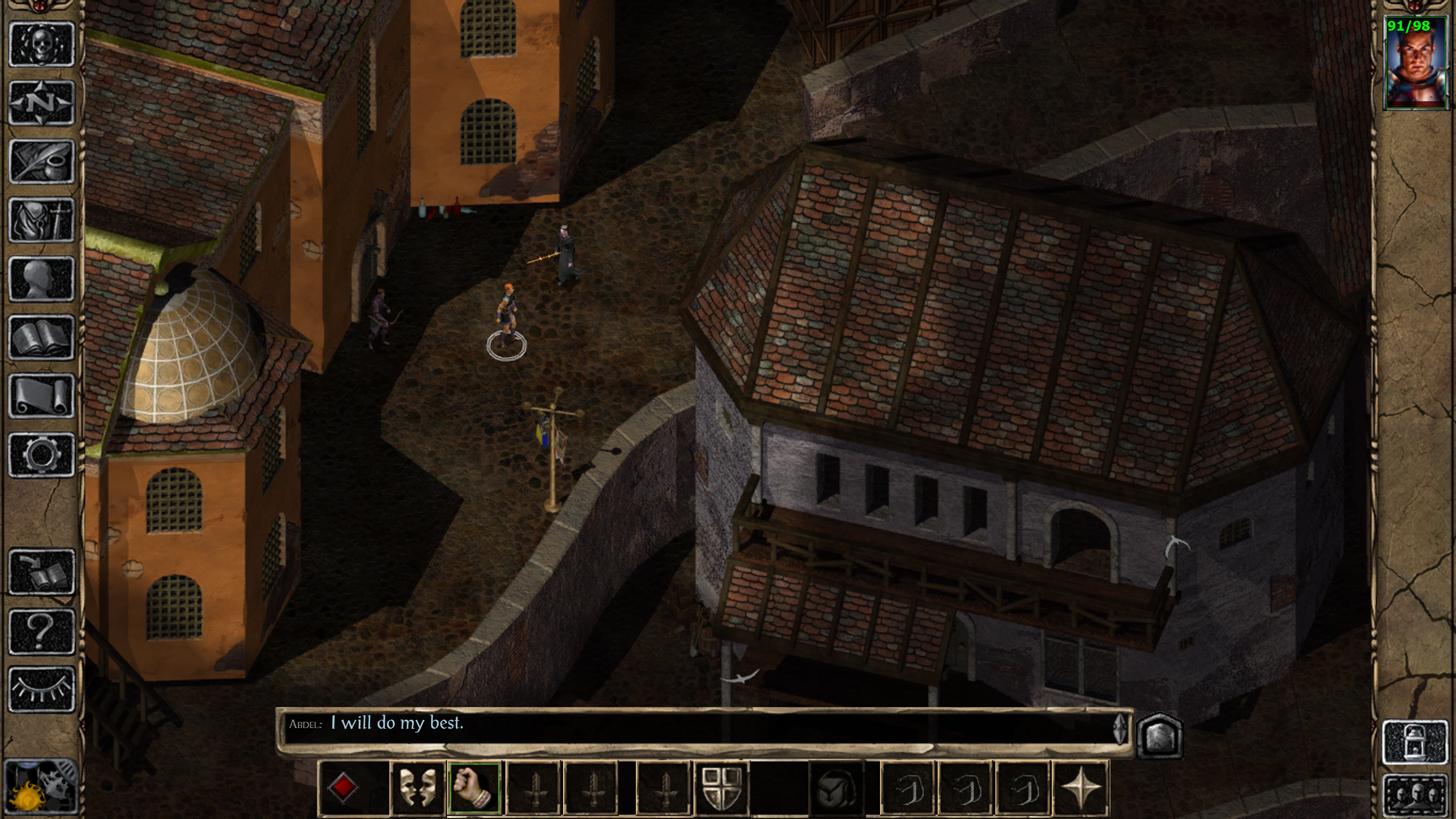
Pixel Boost is our weekly series devoted to the artistry of games, and the techniques required to run them at high resolutions.
Pillars of Eternity, Obsidian's throwback to the glory days of the cRPG, is finally here. And it's great. Pillars lives up to the legacy of some of the greatest PC RPGs ever made. Games likes Baldur's Gate II, for example.
For years, RPGs made on Bioware's now-ancient Infinity Engine have been notoriously fickle to run on modern PCs. Their 2D graphics don't play nice with higher resolutions, if you can even get them to run on Windows 7 or Windows 8 at all. Some of those old games, like Planescape: Torment, still haven't gotten the modern retouching they deserve, although on a previous Pixel Boost I wrote about how to modify Planescape: Torment to run at higher resolutions.
Baldur's Gate II doesn't need the same tinkering thanks to its Enhanced Edition. In honor of Pillars of Eternity, we booted it up and let it stretch out to fill a full 4K display. Zoom in to these screenshots, and you'll see the Enhanced Edition Port sadly doesn't look great so high-res; it was probably built to scale to the more reasonable 1080p. Played on a big 4K panel, however, the 4K resolution simply creates a familiar pre-rendered blurriness that makes the Infinity Engine feel right at home in 2015.
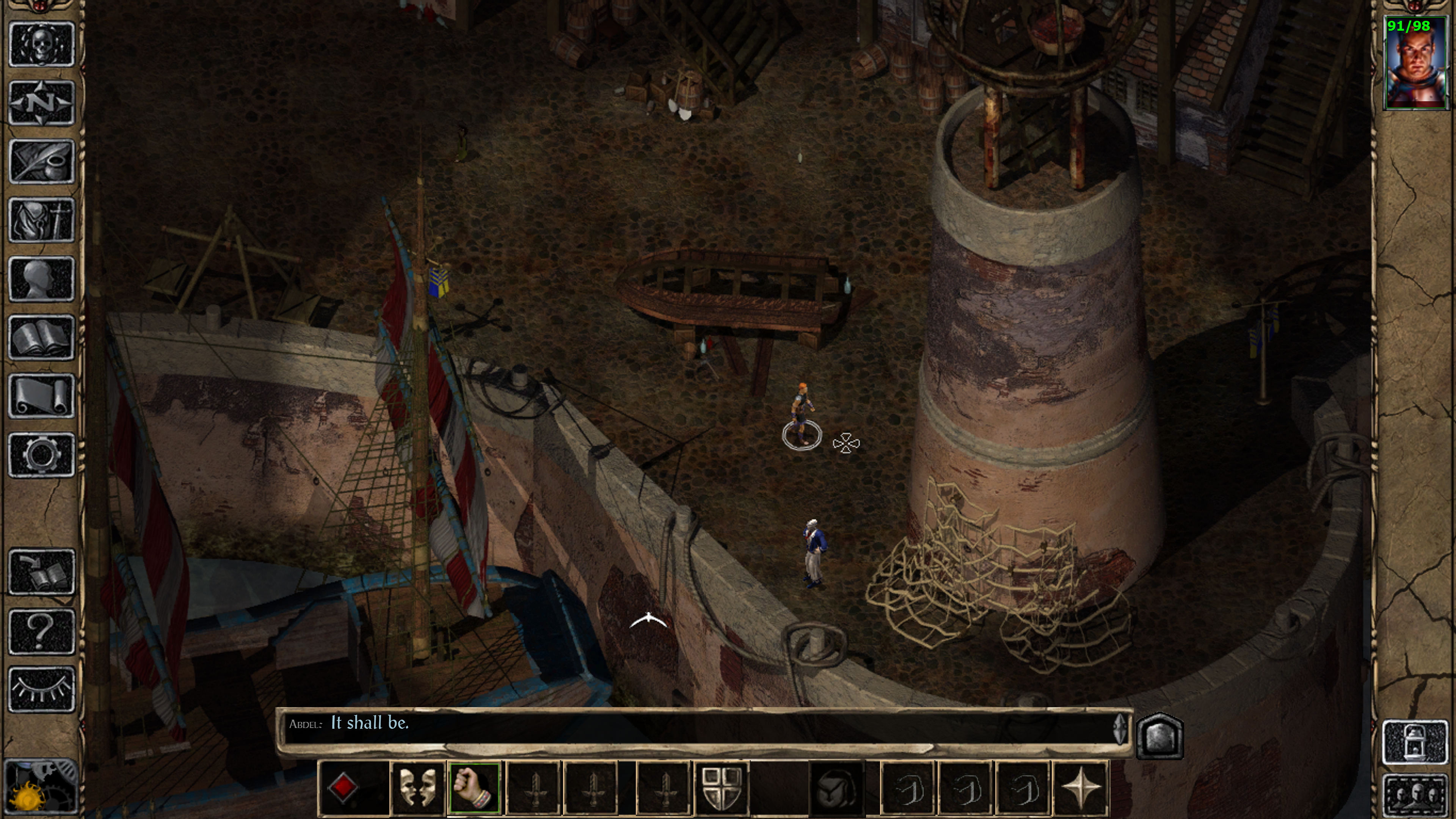
Pixel Boost is our weekly series devoted to the artistry of games, and the techniques required to run them at high resolutions.
Pillars of Eternity, Obsidian's throwback to the glory days of the cRPG, is finally here. And it's great. Pillars lives up to the legacy of some of the greatest PC RPGs ever made. Games likes Baldur's Gate II, for example.
For years, RPGs made on Bioware's now-ancient Infinity Engine have been notoriously fickle to run on modern PCs. Their 2D graphics don't play nice with higher resolutions, if you can even get them to run on Windows 7 or Windows 8 at all. Some of those old games, like Planescape: Torment, still haven't gotten the modern retouching they deserve, although on a previous Pixel Boost I wrote about how to modify Planescape: Torment to run at higher resolutions.
Baldur's Gate II doesn't need the same tinkering thanks to its Enhanced Edition. In honor of Pillars of Eternity, we booted it up and let it stretch out to fill a full 4K display. Zoom in to these screenshots, and you'll see the Enhanced Edition Port sadly doesn't look great so high-res; it was probably built to scale to the more reasonable 1080p. Played on a big 4K panel, however, the 4K resolution simply creates a familiar pre-rendered blurriness that makes the Infinity Engine feel right at home in 2015.
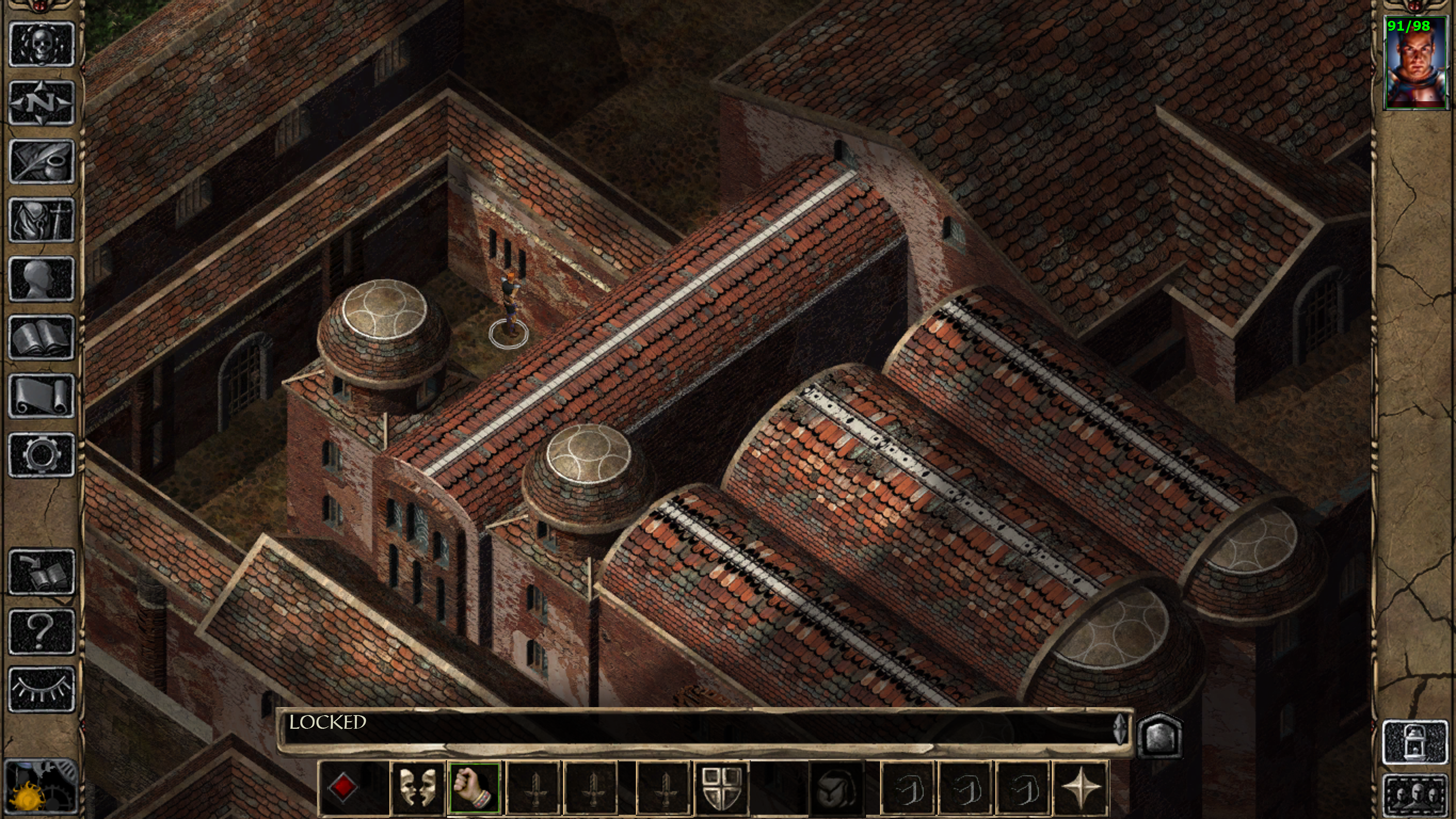
Pixel Boost is our weekly series devoted to the artistry of games, and the techniques required to run them at high resolutions.
Pillars of Eternity, Obsidian's throwback to the glory days of the cRPG, is finally here. And it's great. Pillars lives up to the legacy of some of the greatest PC RPGs ever made. Games likes Baldur's Gate II, for example.
For years, RPGs made on Bioware's now-ancient Infinity Engine have been notoriously fickle to run on modern PCs. Their 2D graphics don't play nice with higher resolutions, if you can even get them to run on Windows 7 or Windows 8 at all. Some of those old games, like Planescape: Torment, still haven't gotten the modern retouching they deserve, although on a previous Pixel Boost I wrote about how to modify Planescape: Torment to run at higher resolutions.
Baldur's Gate II doesn't need the same tinkering thanks to its Enhanced Edition. In honor of Pillars of Eternity, we booted it up and let it stretch out to fill a full 4K display. Zoom in to these screenshots, and you'll see the Enhanced Edition Port sadly doesn't look great so high-res; it was probably built to scale to the more reasonable 1080p. Played on a big 4K panel, however, the 4K resolution simply creates a familiar pre-rendered blurriness that makes the Infinity Engine feel right at home in 2015.
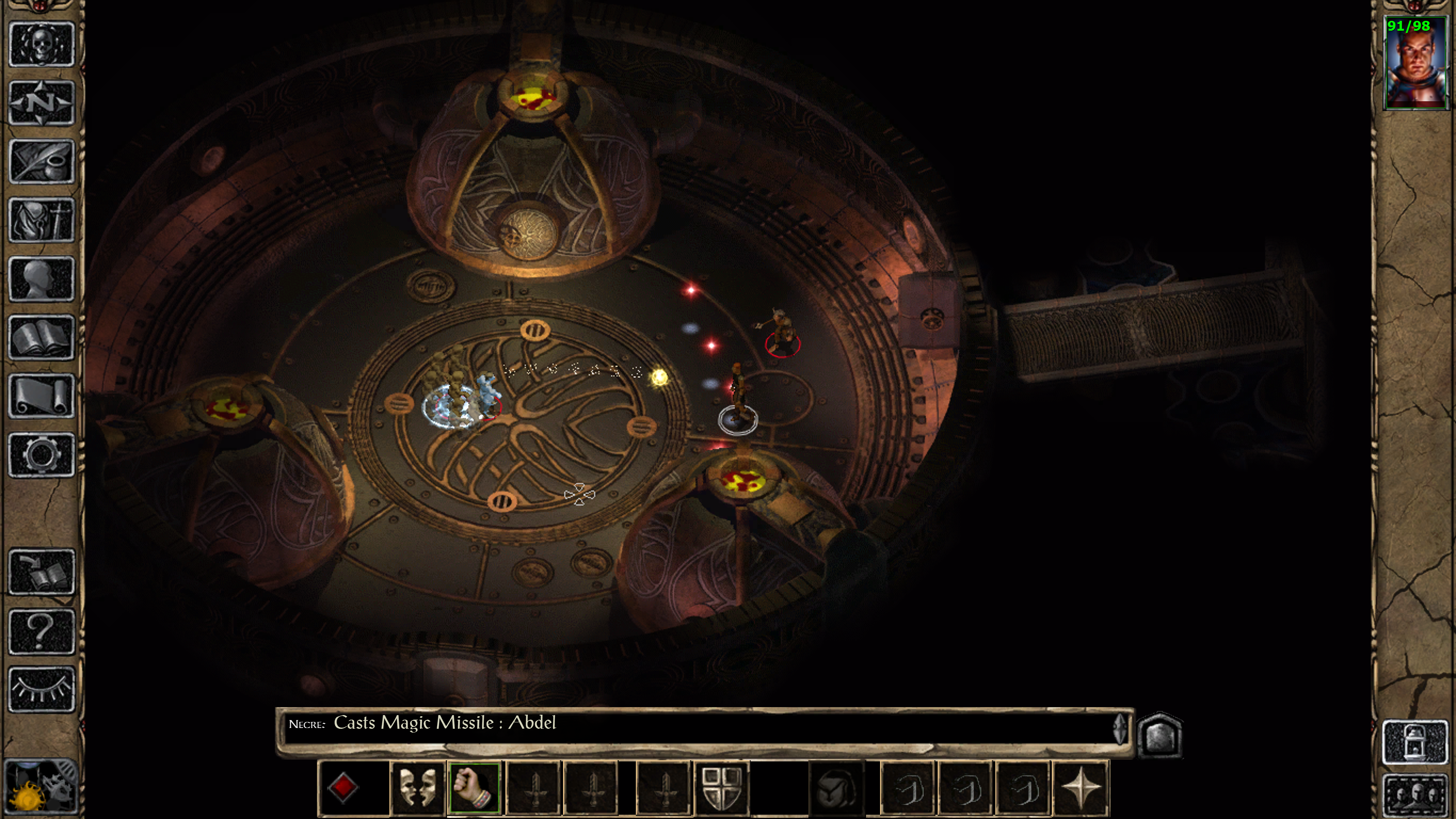
Pixel Boost is our weekly series devoted to the artistry of games, and the techniques required to run them at high resolutions.
Pillars of Eternity, Obsidian's throwback to the glory days of the cRPG, is finally here. And it's great. Pillars lives up to the legacy of some of the greatest PC RPGs ever made. Games likes Baldur's Gate II, for example.
For years, RPGs made on Bioware's now-ancient Infinity Engine have been notoriously fickle to run on modern PCs. Their 2D graphics don't play nice with higher resolutions, if you can even get them to run on Windows 7 or Windows 8 at all. Some of those old games, like Planescape: Torment, still haven't gotten the modern retouching they deserve, although on a previous Pixel Boost I wrote about how to modify Planescape: Torment to run at higher resolutions.
Baldur's Gate II doesn't need the same tinkering thanks to its Enhanced Edition. In honor of Pillars of Eternity, we booted it up and let it stretch out to fill a full 4K display. Zoom in to these screenshots, and you'll see the Enhanced Edition Port sadly doesn't look great so high-res; it was probably built to scale to the more reasonable 1080p. Played on a big 4K panel, however, the 4K resolution simply creates a familiar pre-rendered blurriness that makes the Infinity Engine feel right at home in 2015.
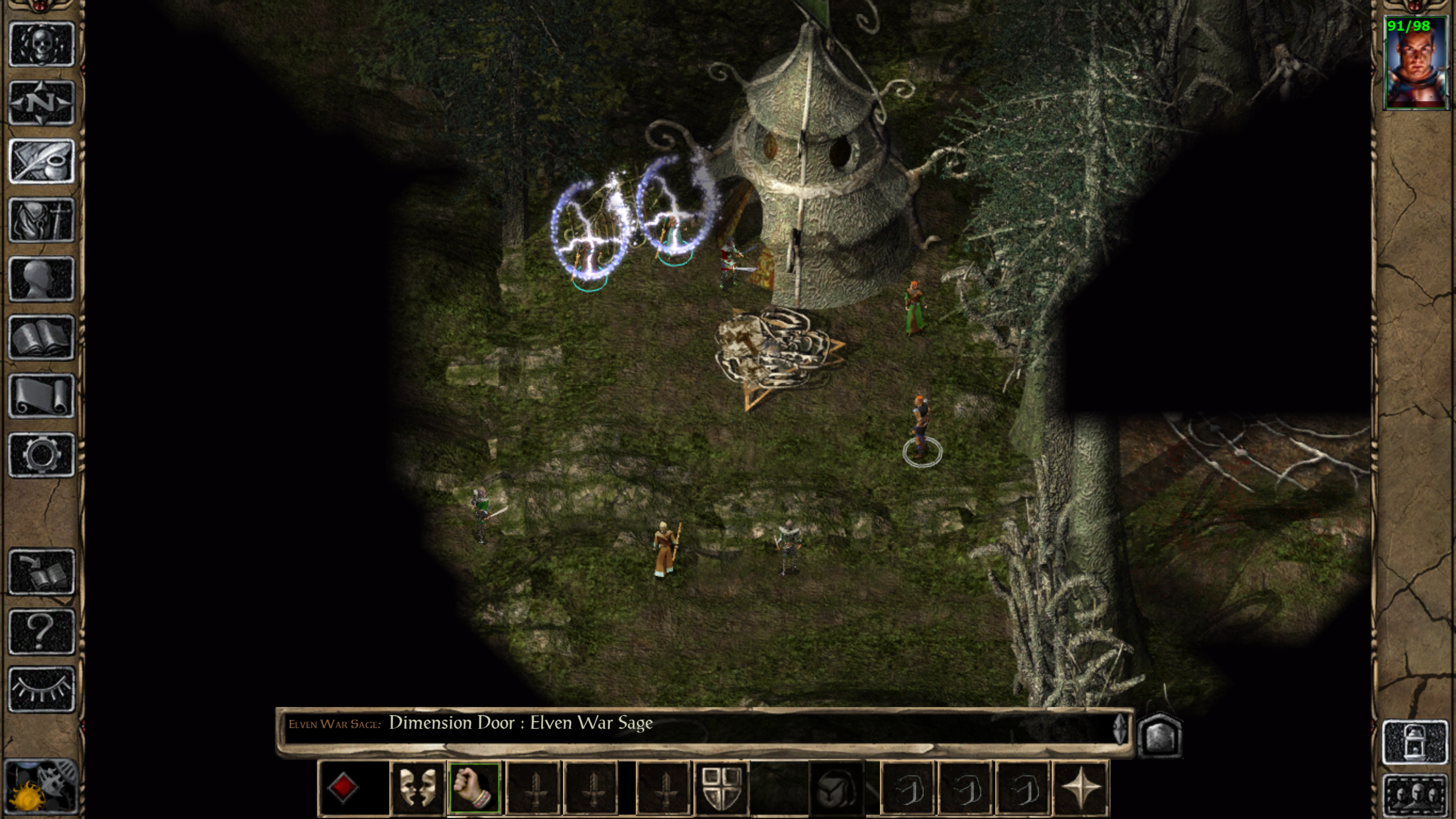
Pixel Boost is our weekly series devoted to the artistry of games, and the techniques required to run them at high resolutions.
Pillars of Eternity, Obsidian's throwback to the glory days of the cRPG, is finally here. And it's great. Pillars lives up to the legacy of some of the greatest PC RPGs ever made. Games likes Baldur's Gate II, for example.
For years, RPGs made on Bioware's now-ancient Infinity Engine have been notoriously fickle to run on modern PCs. Their 2D graphics don't play nice with higher resolutions, if you can even get them to run on Windows 7 or Windows 8 at all. Some of those old games, like Planescape: Torment, still haven't gotten the modern retouching they deserve, although on a previous Pixel Boost I wrote about how to modify Planescape: Torment to run at higher resolutions.
Baldur's Gate II doesn't need the same tinkering thanks to its Enhanced Edition. In honor of Pillars of Eternity, we booted it up and let it stretch out to fill a full 4K display. Zoom in to these screenshots, and you'll see the Enhanced Edition Port sadly doesn't look great so high-res; it was probably built to scale to the more reasonable 1080p. Played on a big 4K panel, however, the 4K resolution simply creates a familiar pre-rendered blurriness that makes the Infinity Engine feel right at home in 2015.
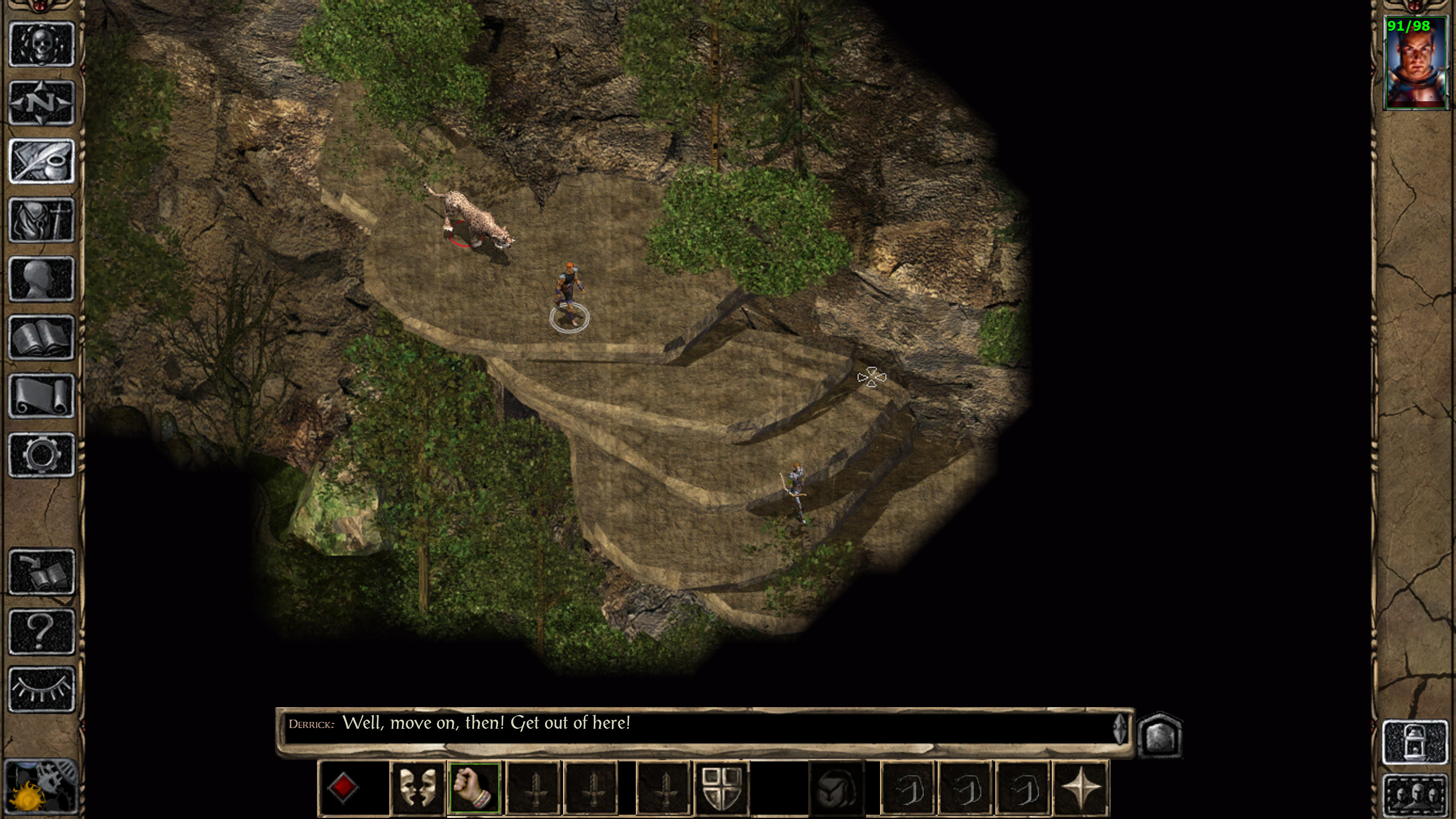
Pixel Boost is our weekly series devoted to the artistry of games, and the techniques required to run them at high resolutions.
Pillars of Eternity, Obsidian's throwback to the glory days of the cRPG, is finally here. And it's great. Pillars lives up to the legacy of some of the greatest PC RPGs ever made. Games likes Baldur's Gate II, for example.
For years, RPGs made on Bioware's now-ancient Infinity Engine have been notoriously fickle to run on modern PCs. Their 2D graphics don't play nice with higher resolutions, if you can even get them to run on Windows 7 or Windows 8 at all. Some of those old games, like Planescape: Torment, still haven't gotten the modern retouching they deserve, although on a previous Pixel Boost I wrote about how to modify Planescape: Torment to run at higher resolutions.
Baldur's Gate II doesn't need the same tinkering thanks to its Enhanced Edition. In honor of Pillars of Eternity, we booted it up and let it stretch out to fill a full 4K display. Zoom in to these screenshots, and you'll see the Enhanced Edition Port sadly doesn't look great so high-res; it was probably built to scale to the more reasonable 1080p. Played on a big 4K panel, however, the 4K resolution simply creates a familiar pre-rendered blurriness that makes the Infinity Engine feel right at home in 2015.
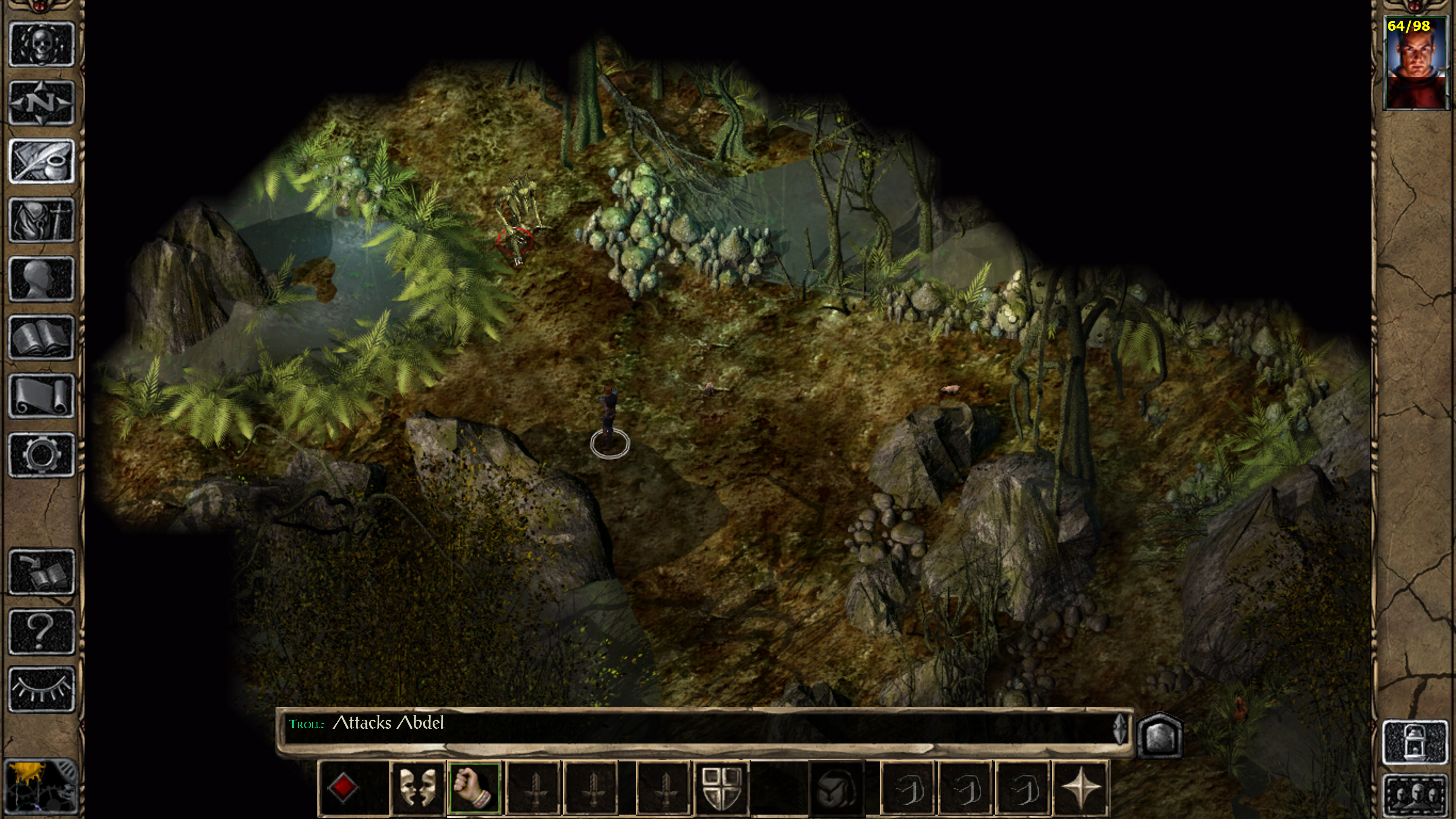
Pixel Boost is our weekly series devoted to the artistry of games, and the techniques required to run them at high resolutions.
Pillars of Eternity, Obsidian's throwback to the glory days of the cRPG, is finally here. And it's great. Pillars lives up to the legacy of some of the greatest PC RPGs ever made. Games likes Baldur's Gate II, for example.
For years, RPGs made on Bioware's now-ancient Infinity Engine have been notoriously fickle to run on modern PCs. Their 2D graphics don't play nice with higher resolutions, if you can even get them to run on Windows 7 or Windows 8 at all. Some of those old games, like Planescape: Torment, still haven't gotten the modern retouching they deserve, although on a previous Pixel Boost I wrote about how to modify Planescape: Torment to run at higher resolutions.
Baldur's Gate II doesn't need the same tinkering thanks to its Enhanced Edition. In honor of Pillars of Eternity, we booted it up and let it stretch out to fill a full 4K display. Zoom in to these screenshots, and you'll see the Enhanced Edition Port sadly doesn't look great so high-res; it was probably built to scale to the more reasonable 1080p. Played on a big 4K panel, however, the 4K resolution simply creates a familiar pre-rendered blurriness that makes the Infinity Engine feel right at home in 2015.

Pixel Boost is our weekly series devoted to the artistry of games, and the techniques required to run them at high resolutions.
Pillars of Eternity, Obsidian's throwback to the glory days of the cRPG, is finally here. And it's great. Pillars lives up to the legacy of some of the greatest PC RPGs ever made. Games likes Baldur's Gate II, for example.
For years, RPGs made on Bioware's now-ancient Infinity Engine have been notoriously fickle to run on modern PCs. Their 2D graphics don't play nice with higher resolutions, if you can even get them to run on Windows 7 or Windows 8 at all. Some of those old games, like Planescape: Torment, still haven't gotten the modern retouching they deserve, although on a previous Pixel Boost I wrote about how to modify Planescape: Torment to run at higher resolutions.
Baldur's Gate II doesn't need the same tinkering thanks to its Enhanced Edition. In honor of Pillars of Eternity, we booted it up and let it stretch out to fill a full 4K display. Zoom in to these screenshots, and you'll see the Enhanced Edition Port sadly doesn't look great so high-res; it was probably built to scale to the more reasonable 1080p. Played on a big 4K panel, however, the 4K resolution simply creates a familiar pre-rendered blurriness that makes the Infinity Engine feel right at home in 2015.
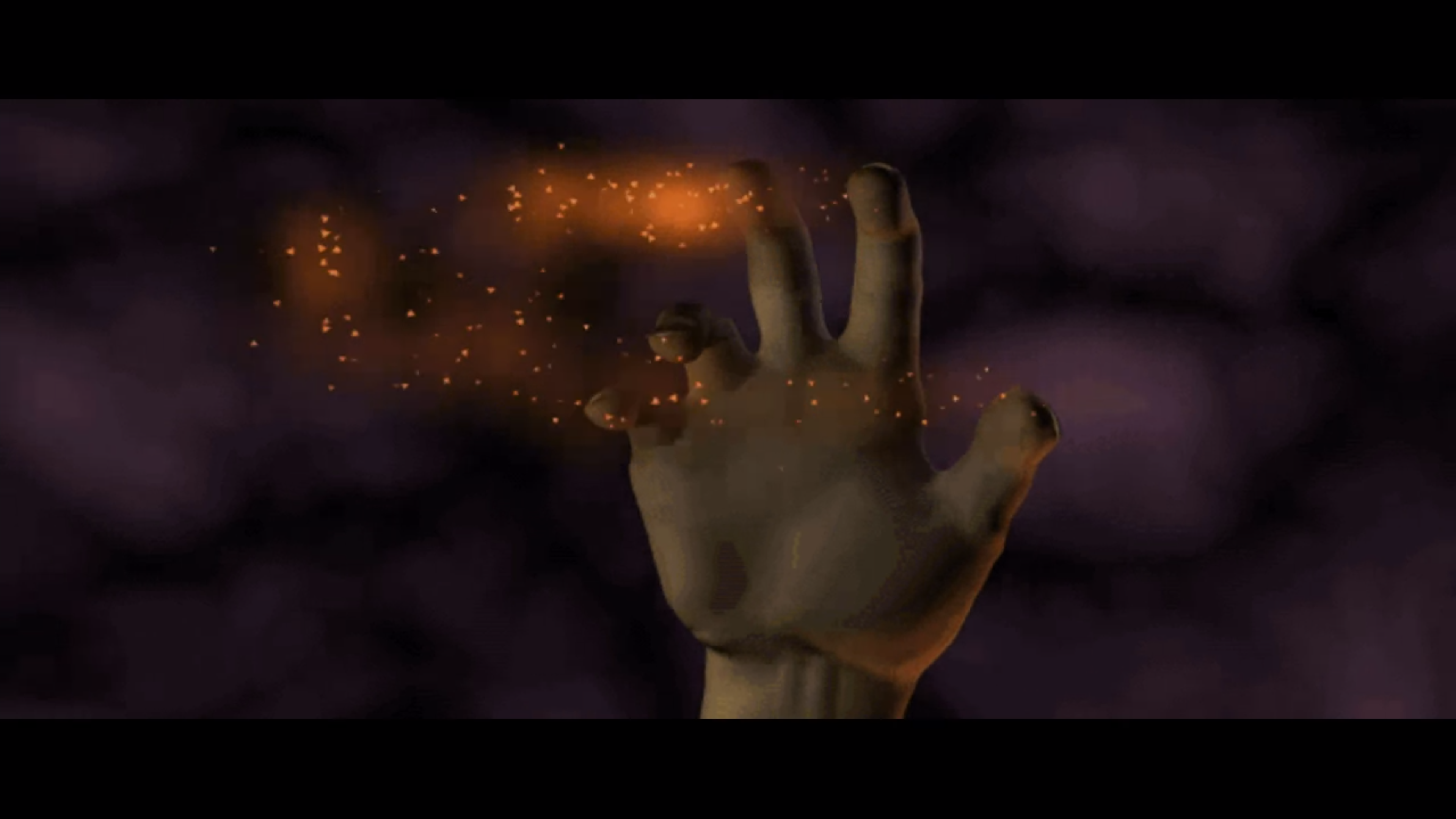
Pixel Boost is our weekly series devoted to the artistry of games, and the techniques required to run them at high resolutions.
Pillars of Eternity, Obsidian's throwback to the glory days of the cRPG, is finally here. And it's great. Pillars lives up to the legacy of some of the greatest PC RPGs ever made. Games likes Baldur's Gate II, for example.
For years, RPGs made on Bioware's now-ancient Infinity Engine have been notoriously fickle to run on modern PCs. Their 2D graphics don't play nice with higher resolutions, if you can even get them to run on Windows 7 or Windows 8 at all. Some of those old games, like Planescape: Torment, still haven't gotten the modern retouching they deserve, although on a previous Pixel Boost I wrote about how to modify Planescape: Torment to run at higher resolutions.
Baldur's Gate II doesn't need the same tinkering thanks to its Enhanced Edition. In honor of Pillars of Eternity, we booted it up and let it stretch out to fill a full 4K display. Zoom in to these screenshots, and you'll see the Enhanced Edition Port sadly doesn't look great so high-res; it was probably built to scale to the more reasonable 1080p. Played on a big 4K panel, however, the 4K resolution simply creates a familiar pre-rendered blurriness that makes the Infinity Engine feel right at home in 2015.

Wes has been covering games and hardware for more than 10 years, first at tech sites like The Wirecutter and Tested before joining the PC Gamer team in 2014. Wes plays a little bit of everything, but he'll always jump at the chance to cover emulation and Japanese games.
When he's not obsessively optimizing and re-optimizing a tangle of conveyor belts in Satisfactory (it's really becoming a problem), he's probably playing a 20-year-old Final Fantasy or some opaque ASCII roguelike. With a focus on writing and editing features, he seeks out personal stories and in-depth histories from the corners of PC gaming and its niche communities. 50% pizza by volume (deep dish, to be specific).

